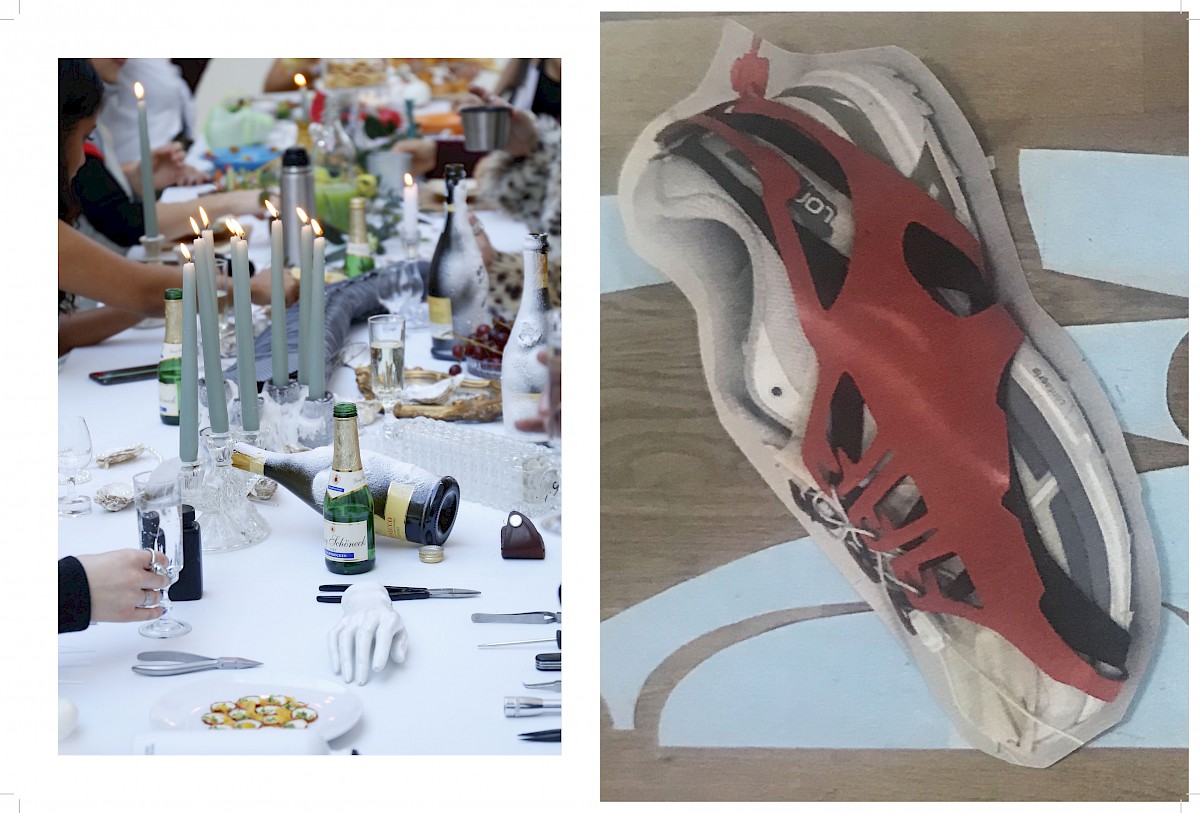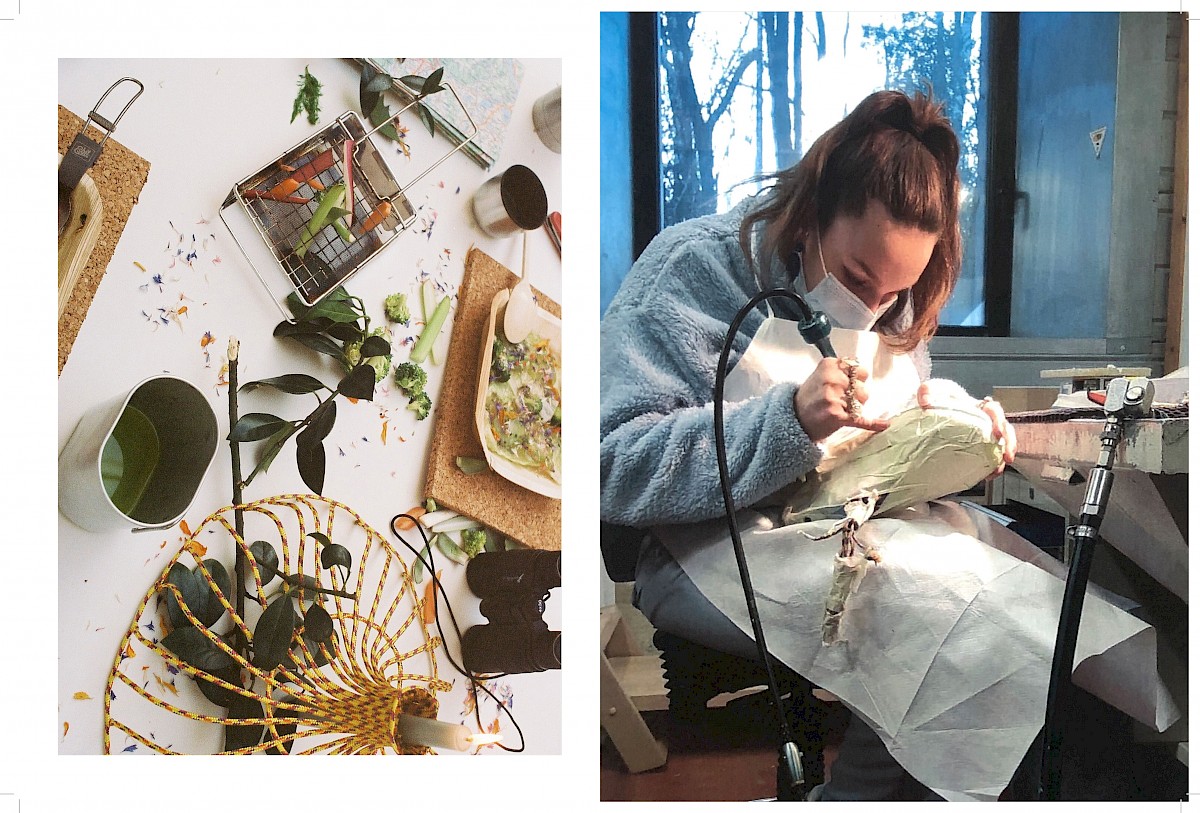Projet Studio
- Le projet design studio 2021 a fait l’objet d’une collaboration avec la marque internationale Salomon, basée à Annecy, et réputée pour son savoir-faire technique de la chaussure de performance. Au cœur du projet, la création pour 2024 d’une chaussure conceptualisée et développée à partir d’une réflexion durable, autour de l’ADN de la maison pour la ligne sportstyle. Travail effectué par groupe.
- Les étudiant·e·x·s ont été suivi·e·x·s par l’équipe créative de Salomon à chaque étape du projet. Iels ont également bénéficié du soutien de Thomas Massias de Arpent Studio (Paris) sur le design de chaussure, et de Valentina Persico (design and development, Paul Smith) sur le développement technique.
- Les objectifs de ce semestre sont les suivants: Compréhension du concept d’ADN d’une marque et sa traduction dans un produit (branding mais aussi style et positionnement) ; compréhension des enjeux professionnels d’un.e.x designer.x freelance et des étapes de travail qui y sont liées; designer un produit qui réponde à des contraintes techniques et durables ; savoir communiquer avec les équipes créatives et techniques et réagir en fonction des retours ; faire face aux responsabilités qu’impliquent la production d’un produit en partant d’une idée; capacité à travailler en groupe, déléguer, se responsabiliser, s’entraider, prendre soin de sois et des autres.
Studio project
- The 2021 design studio project was the subject of a collaboration with the international brand Salomon, based in Annecy, and renowned for its technical know-how in performance footwear. At the heart of the project, the creation for 2024 of a shoe conceptualized and developed from a sustainable reflection, around the DNA of the house for the sportstyle line. Work was done in groups.
- The students were followed by Salomon’s creative team at each stage of the project. They also benefited from the support of Thomas Massias from Arpent Studio (Paris) on the shoe design, and Valentina Persico (design and development, Paul Smith) on the technical development.
- The objectives of this semester are the following: Understanding the concept of a brand’s DNA and its translation into a product (branding but also style and positioning); understanding the professional issues of a.e.x designer. x freelance and the related work steps; designing a product that meets technical and sustainable constraints; knowing how to communicate with creative and technical teams and react to feedback; facing the responsibilities involved in producing a product from an idea; ability to work in a group, to delegate, to take responsibility, to help each other, to take care of oneself and others.
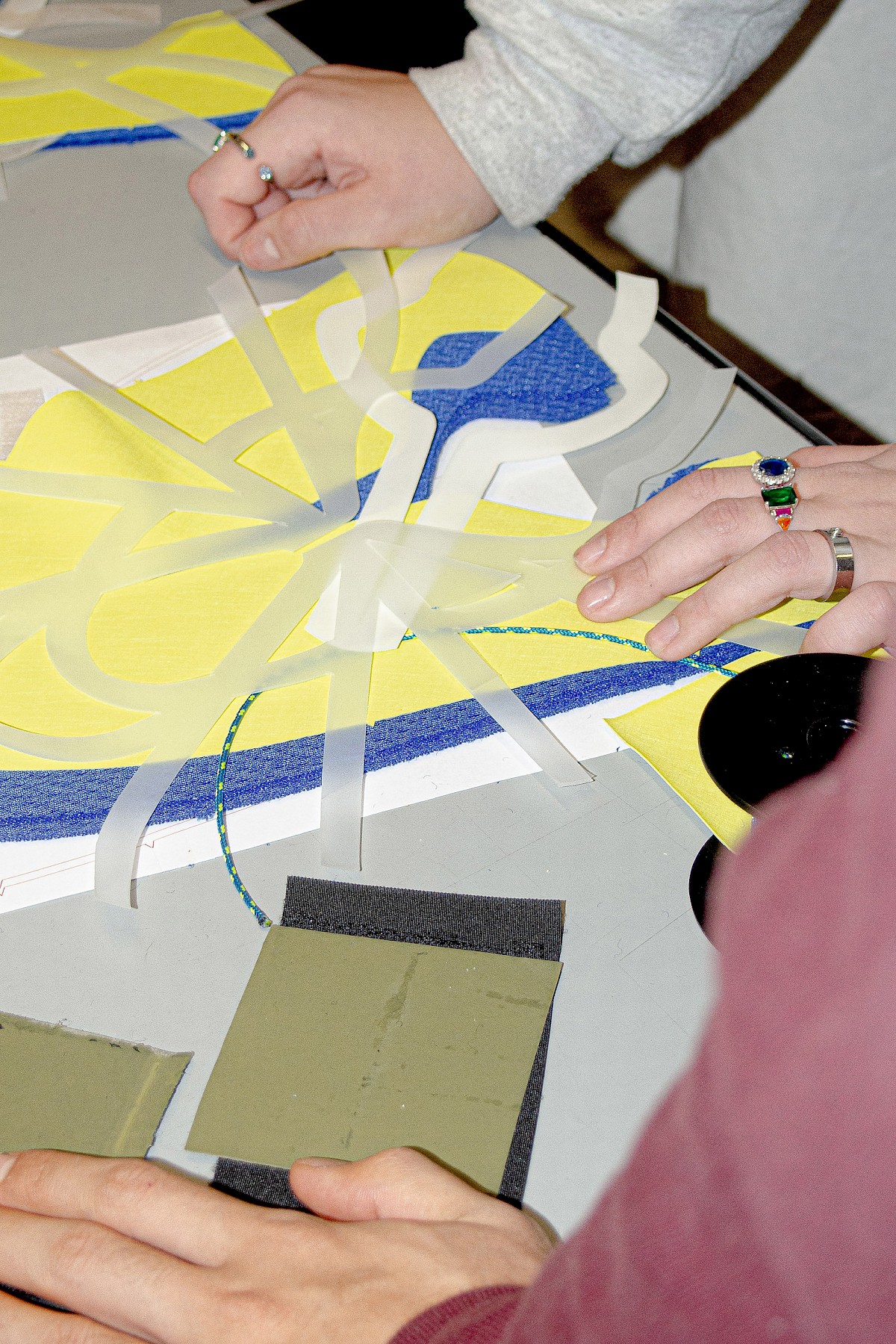
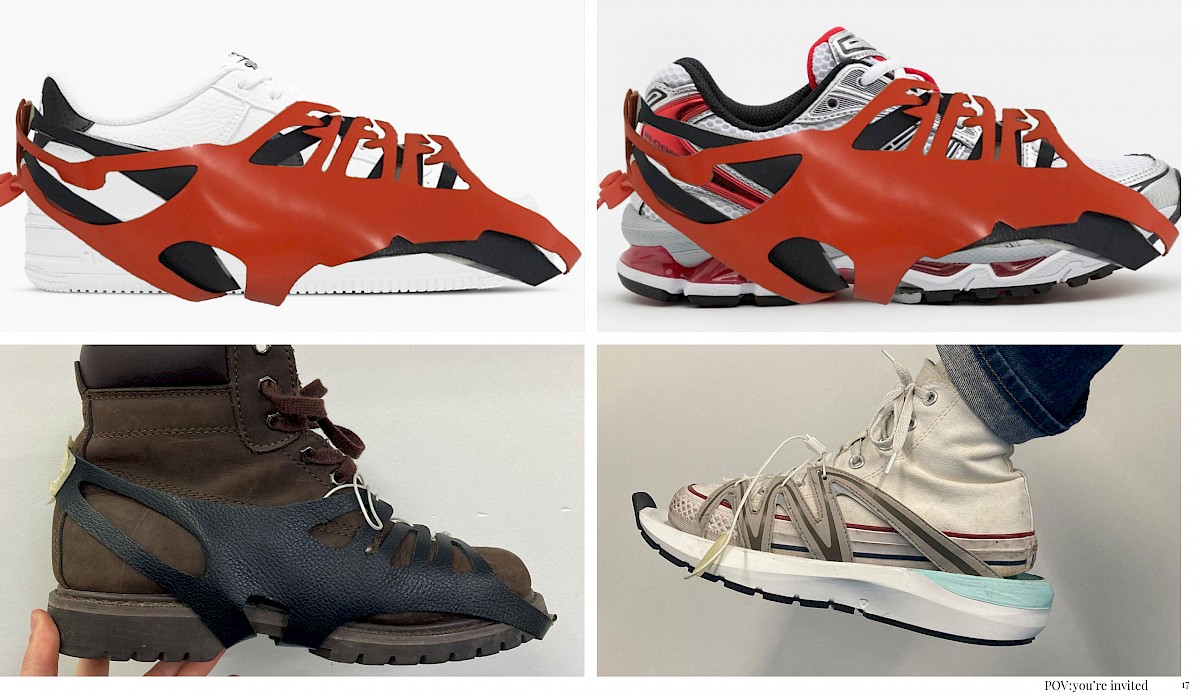
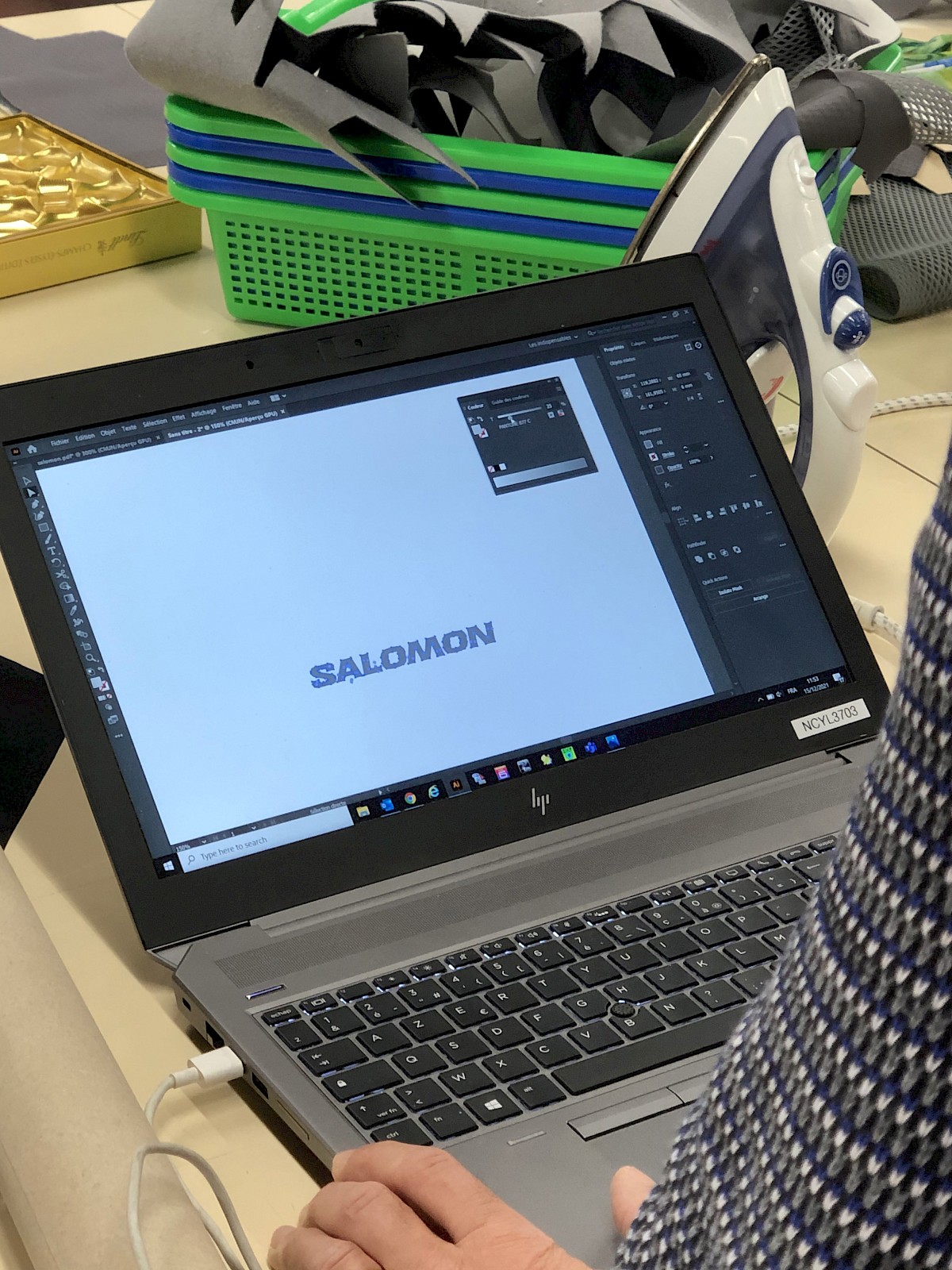
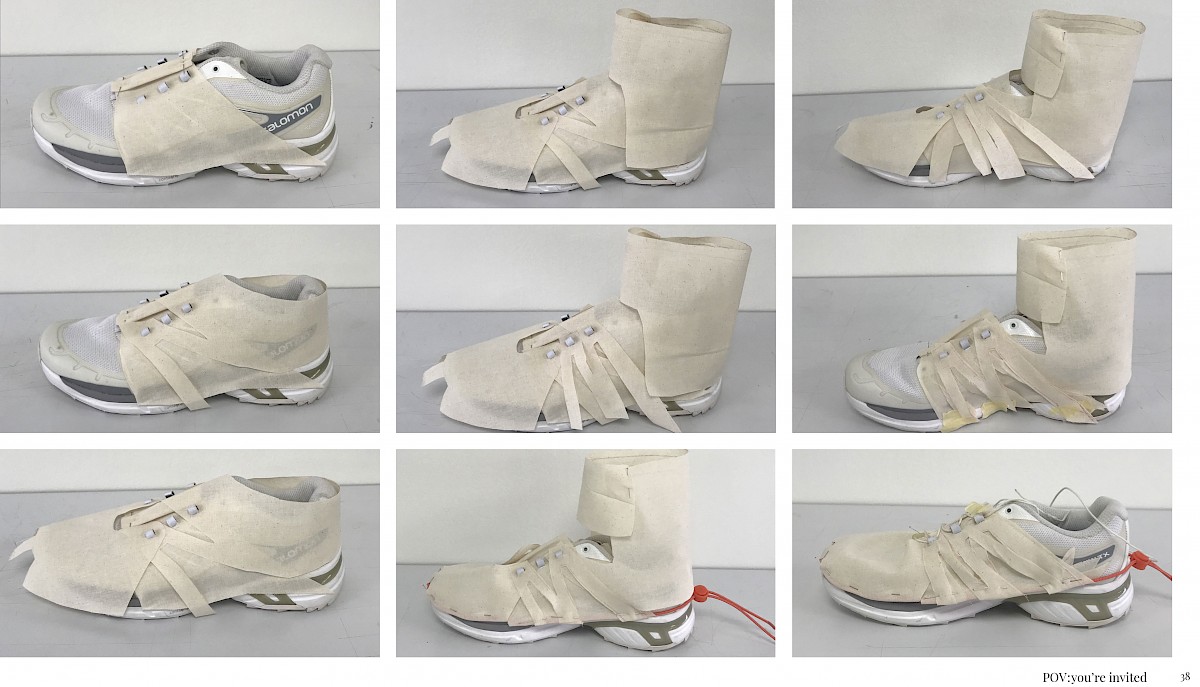
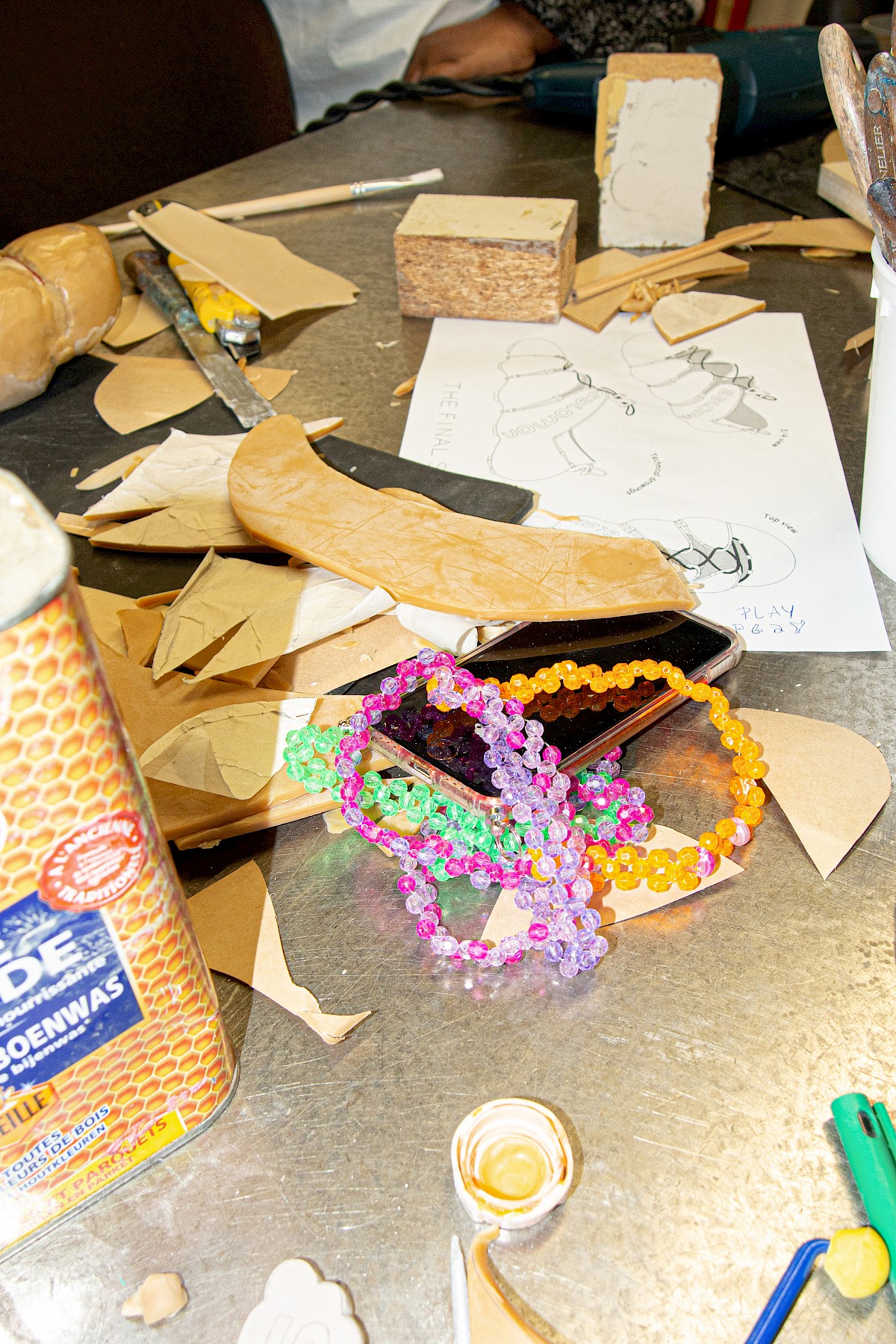
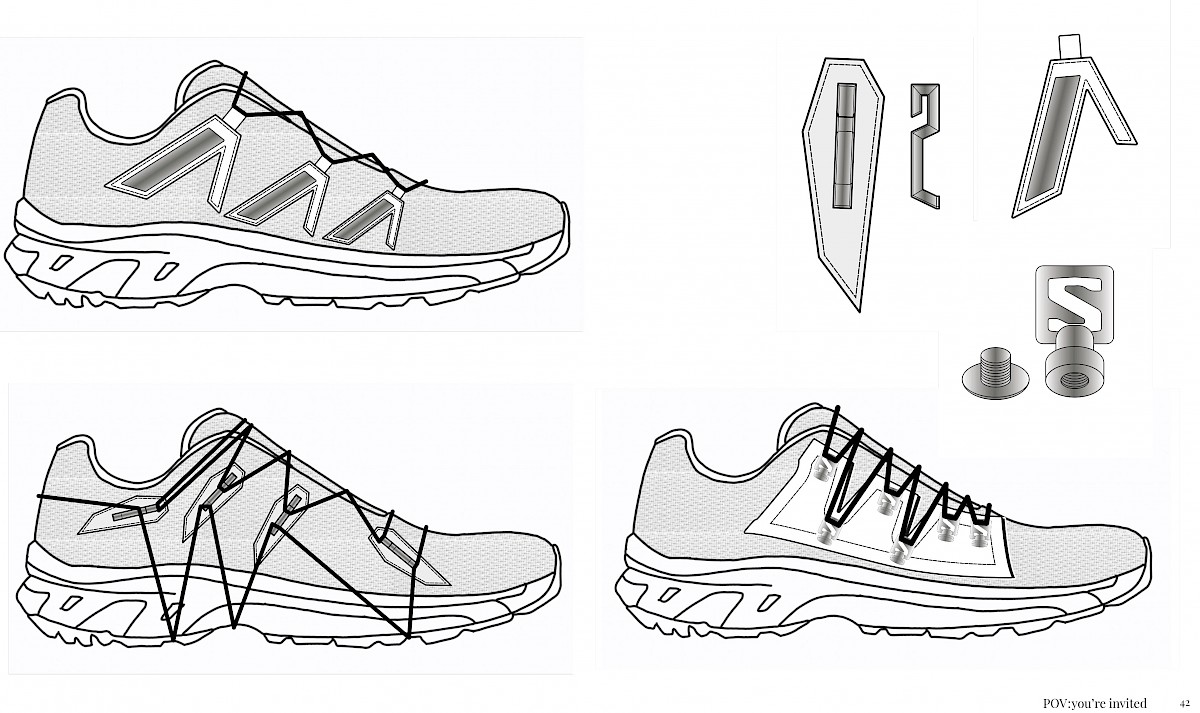
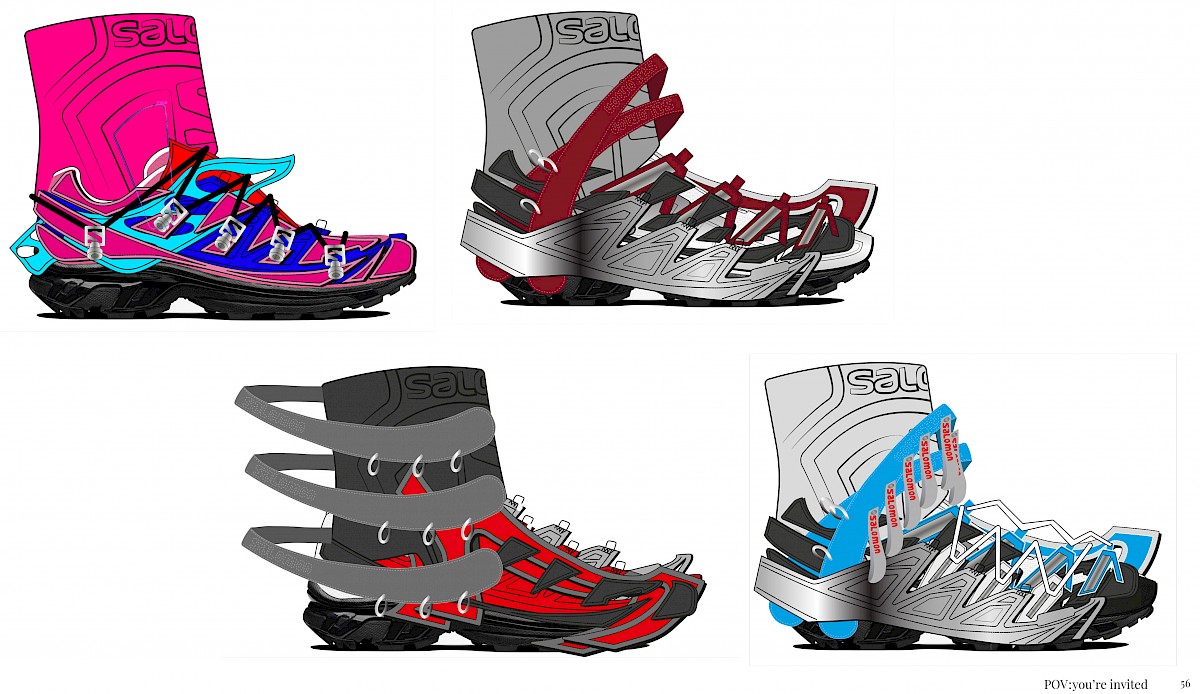
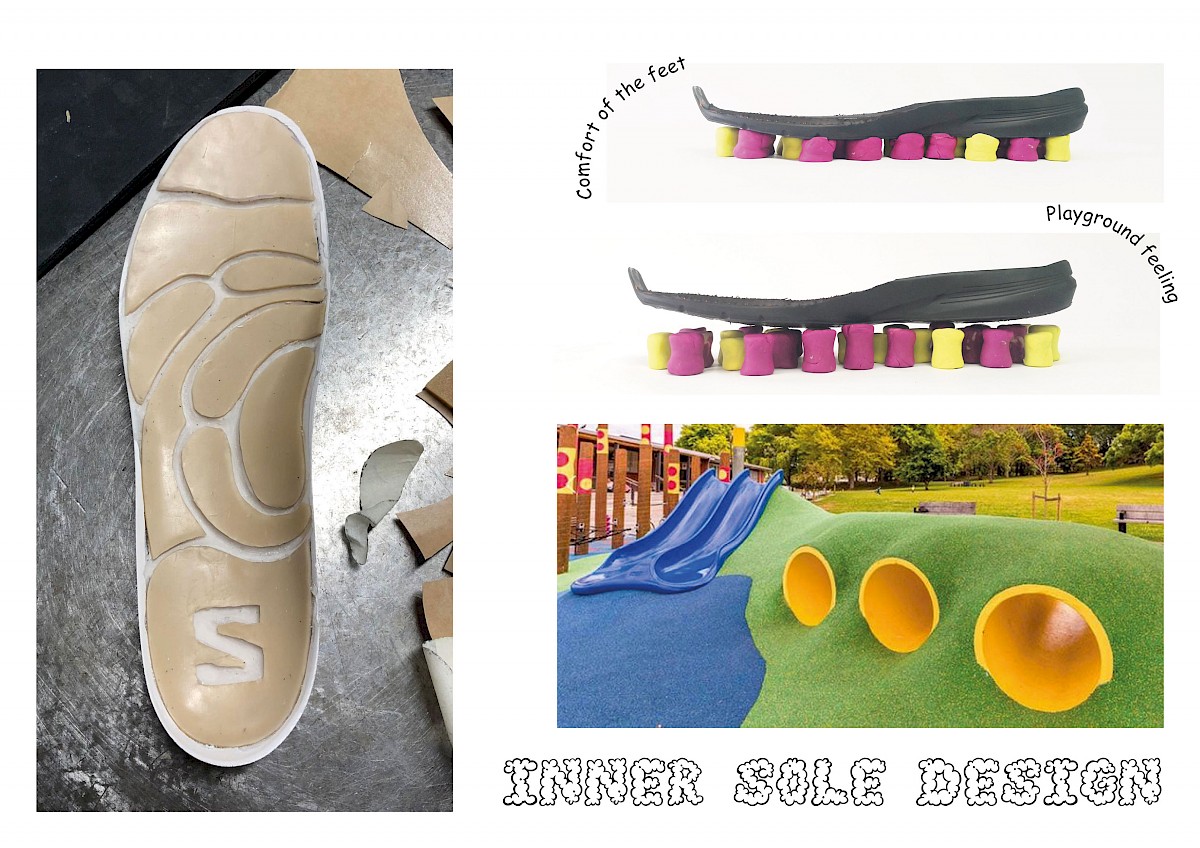
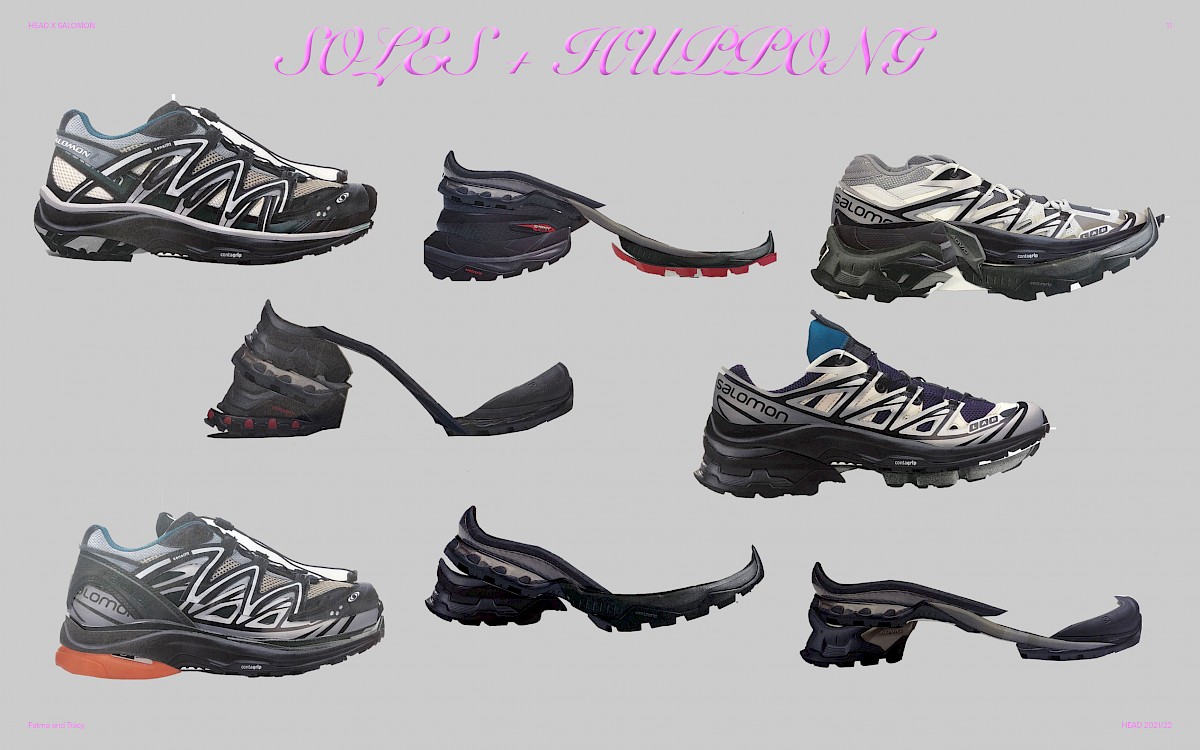
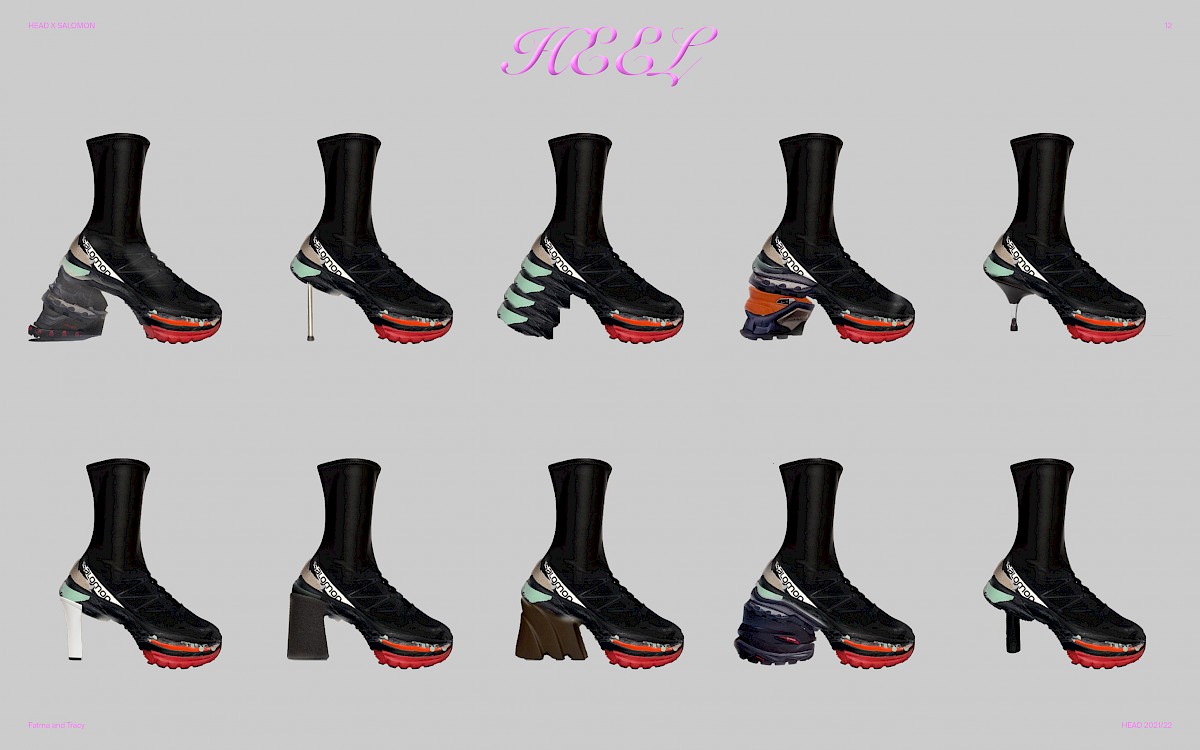
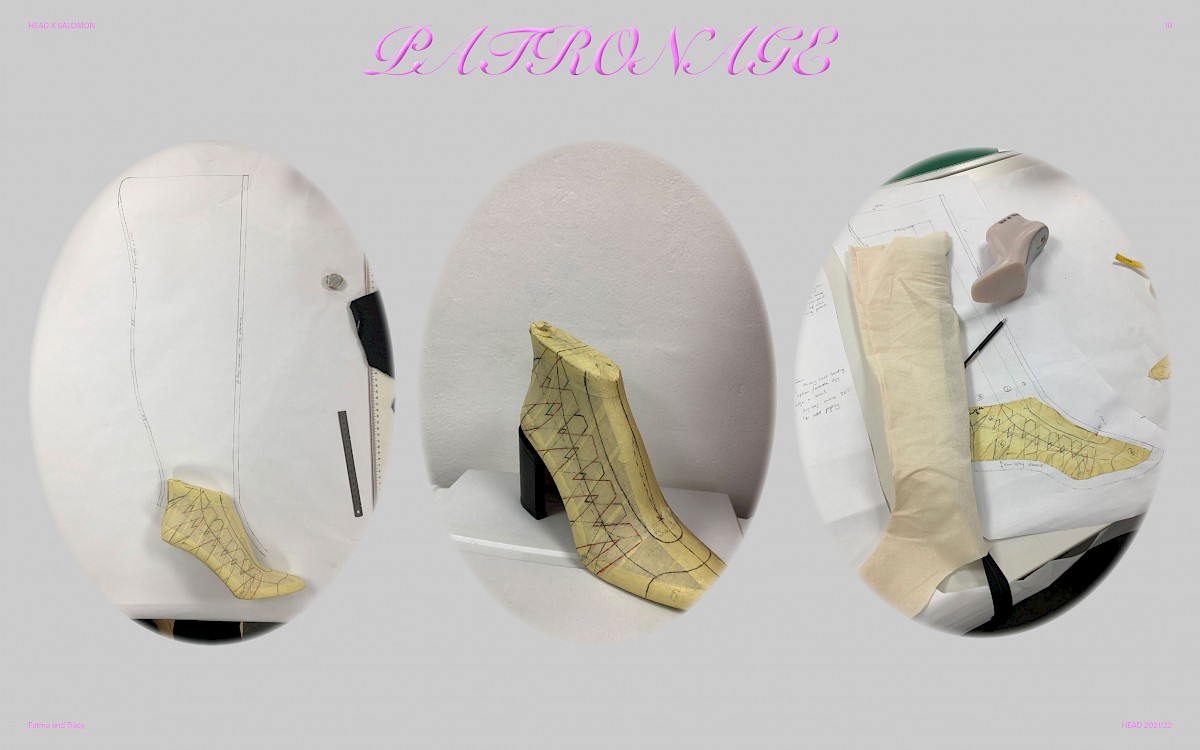
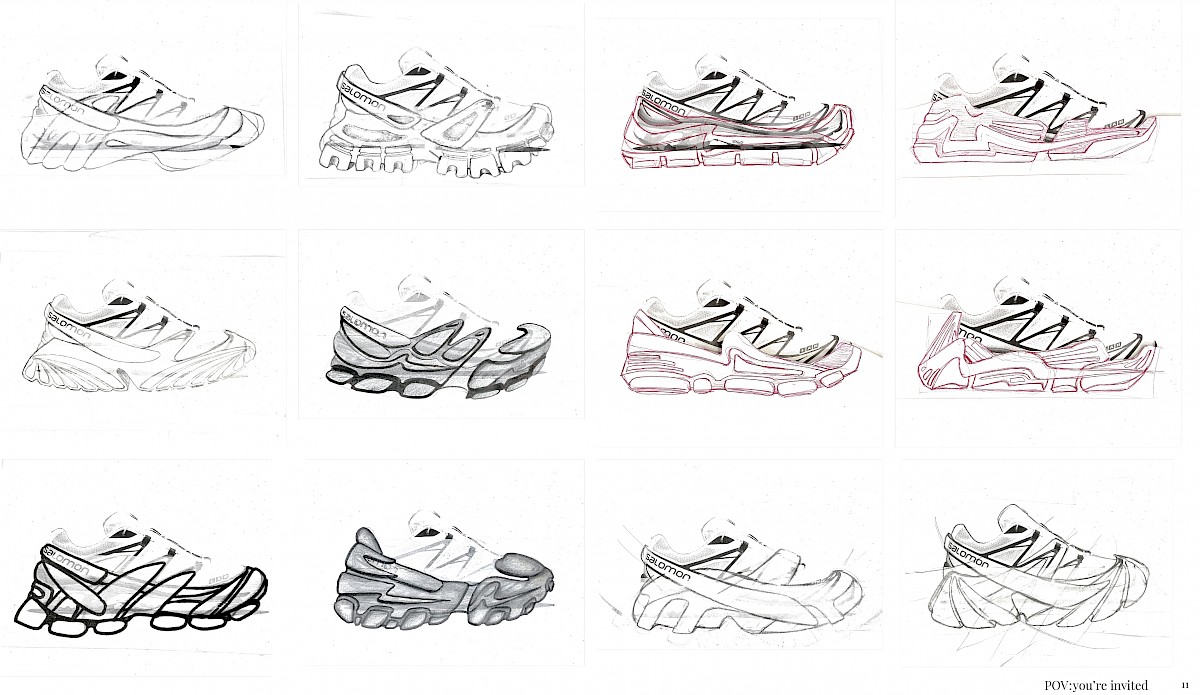
Recherches & Experimentations
Research & experimentation
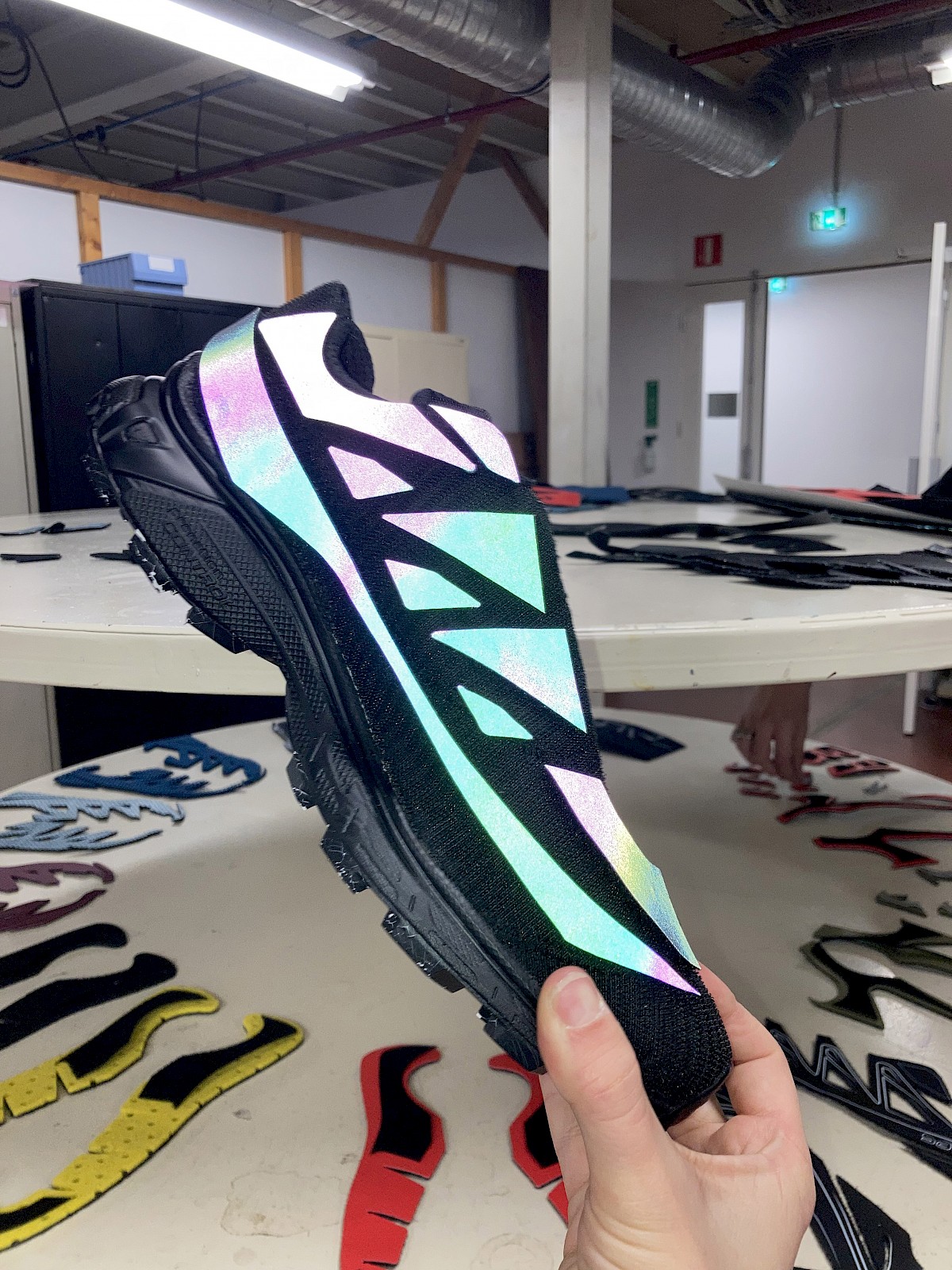
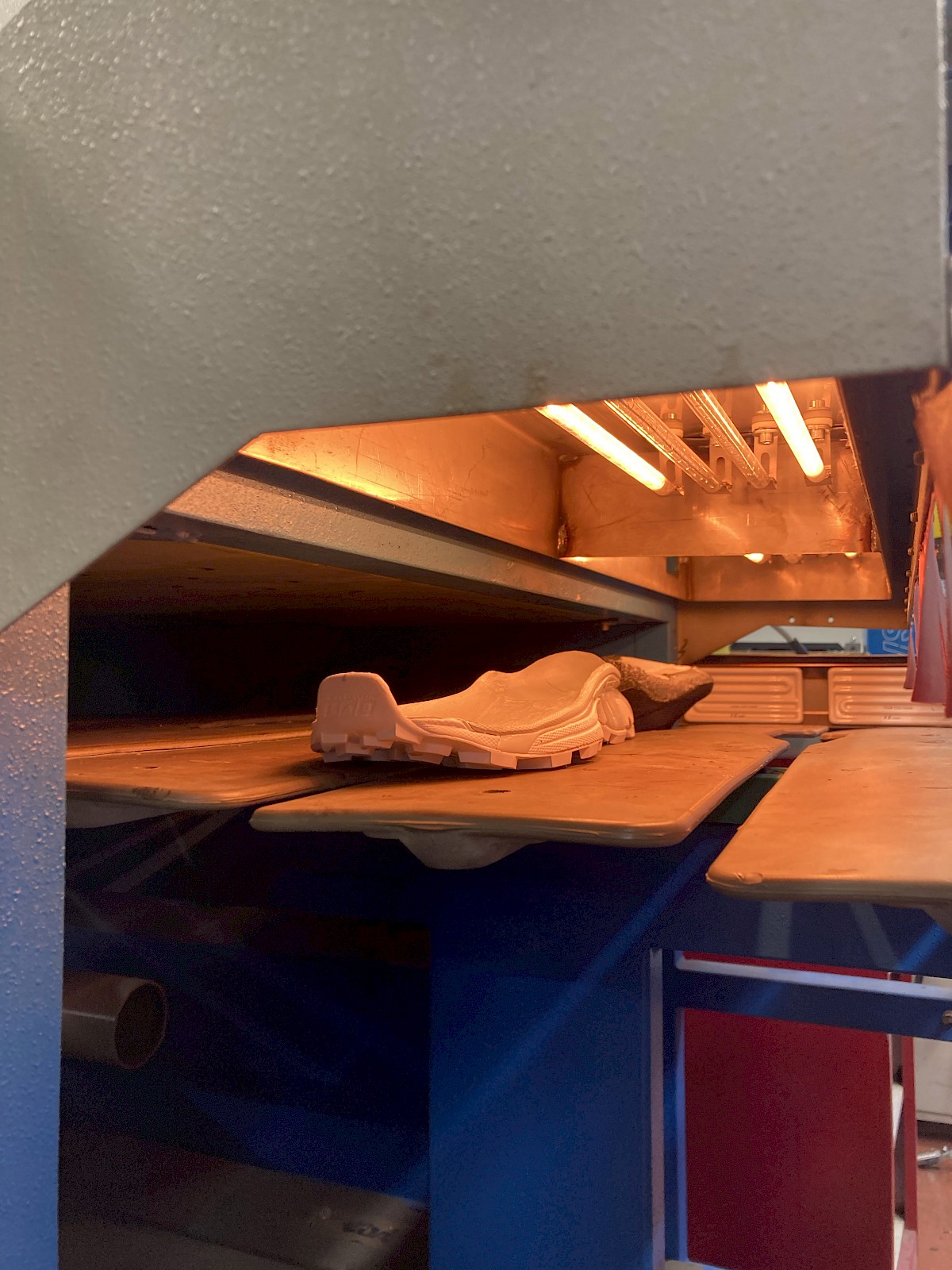
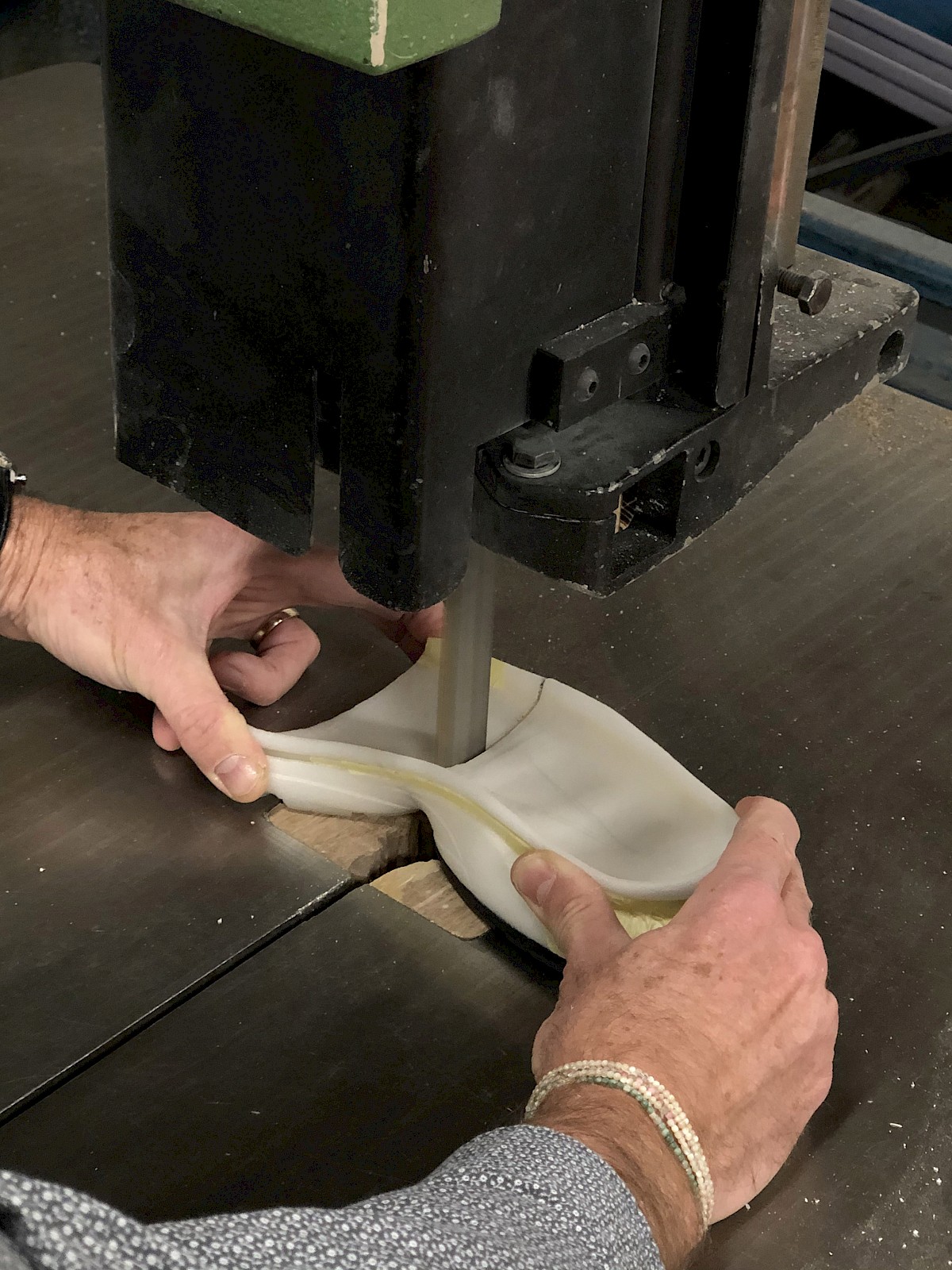
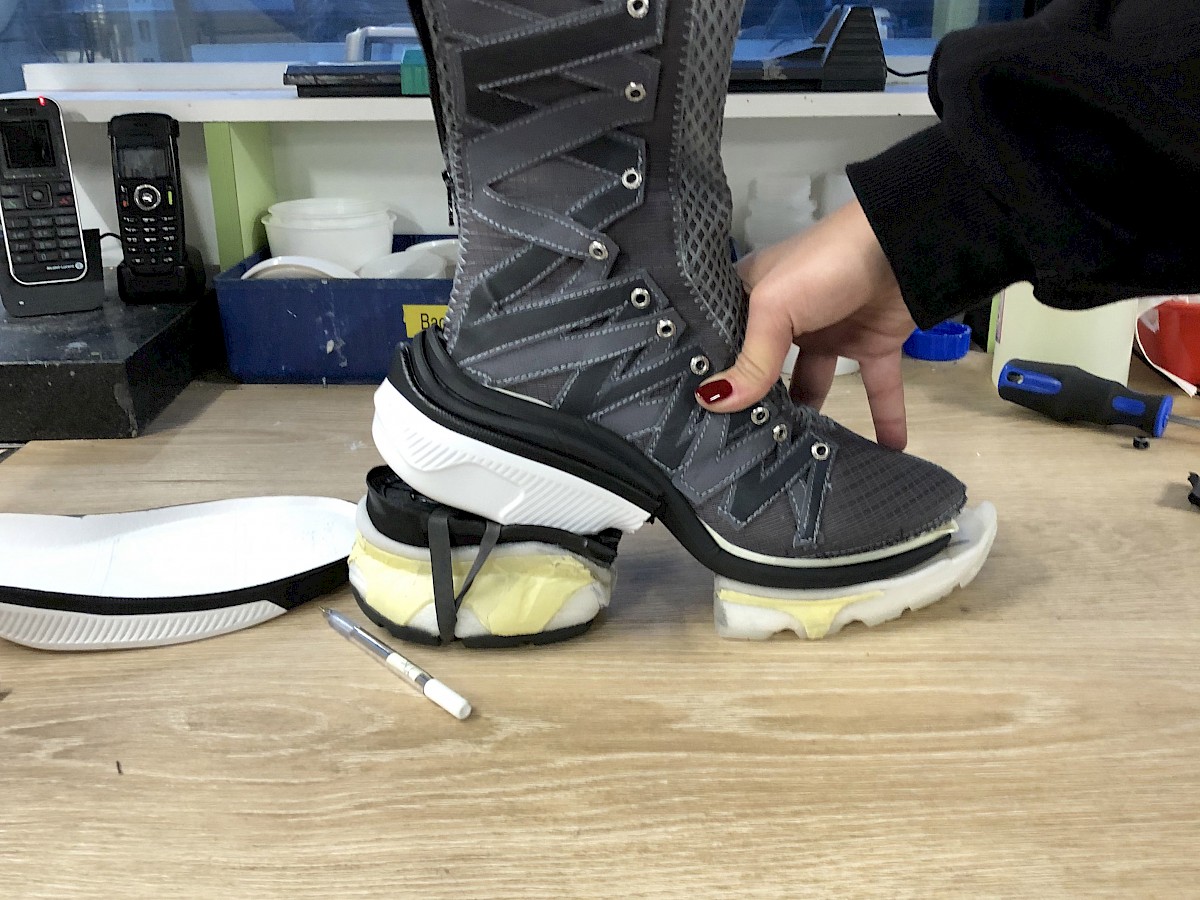
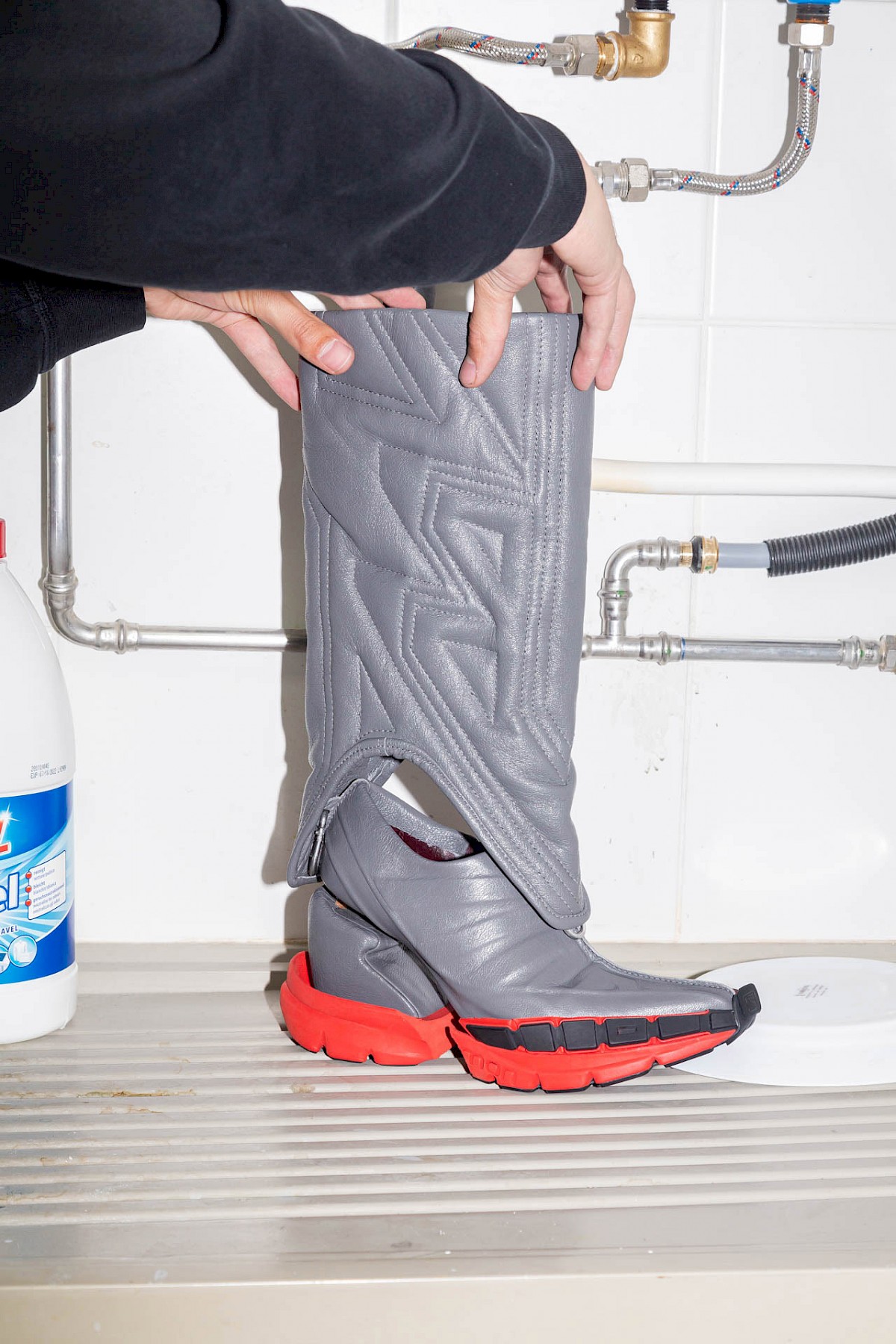
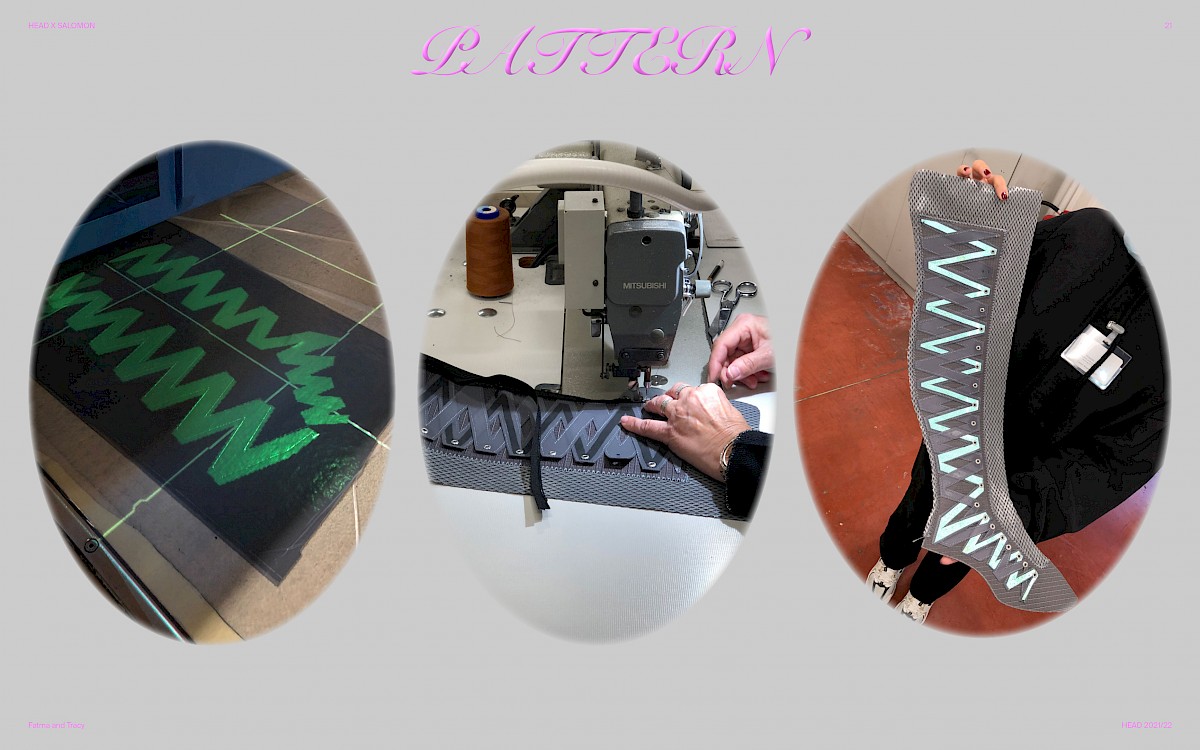
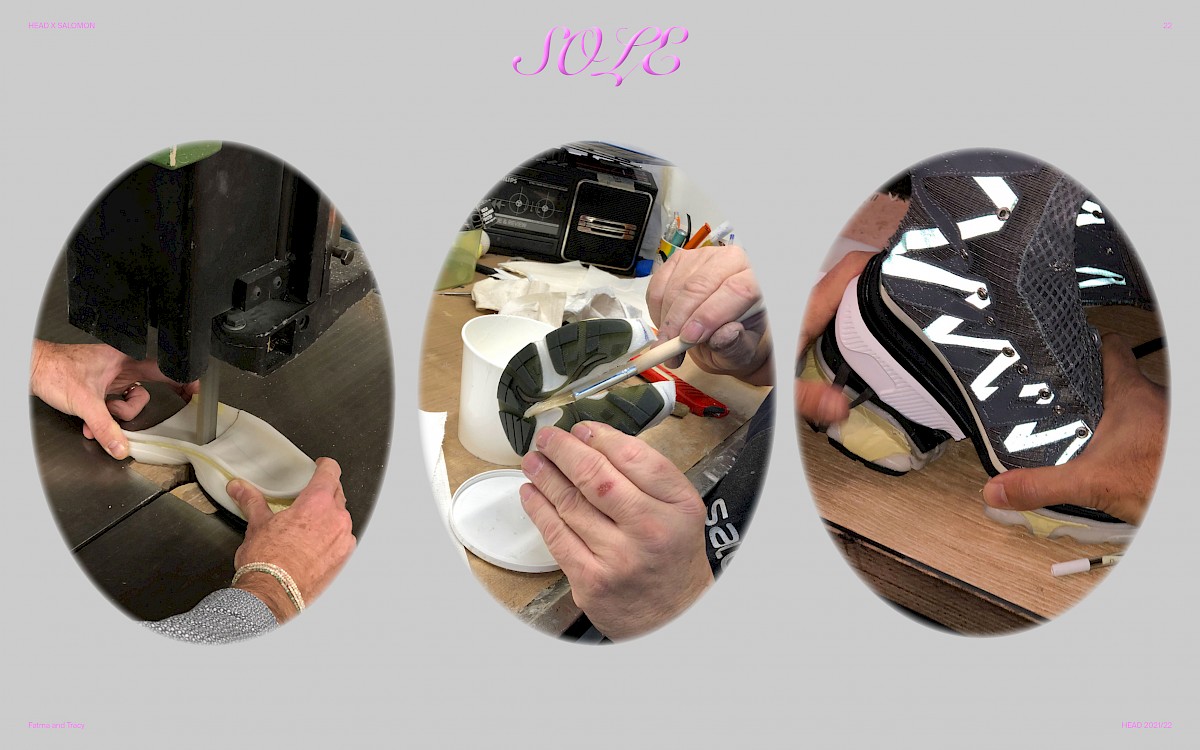
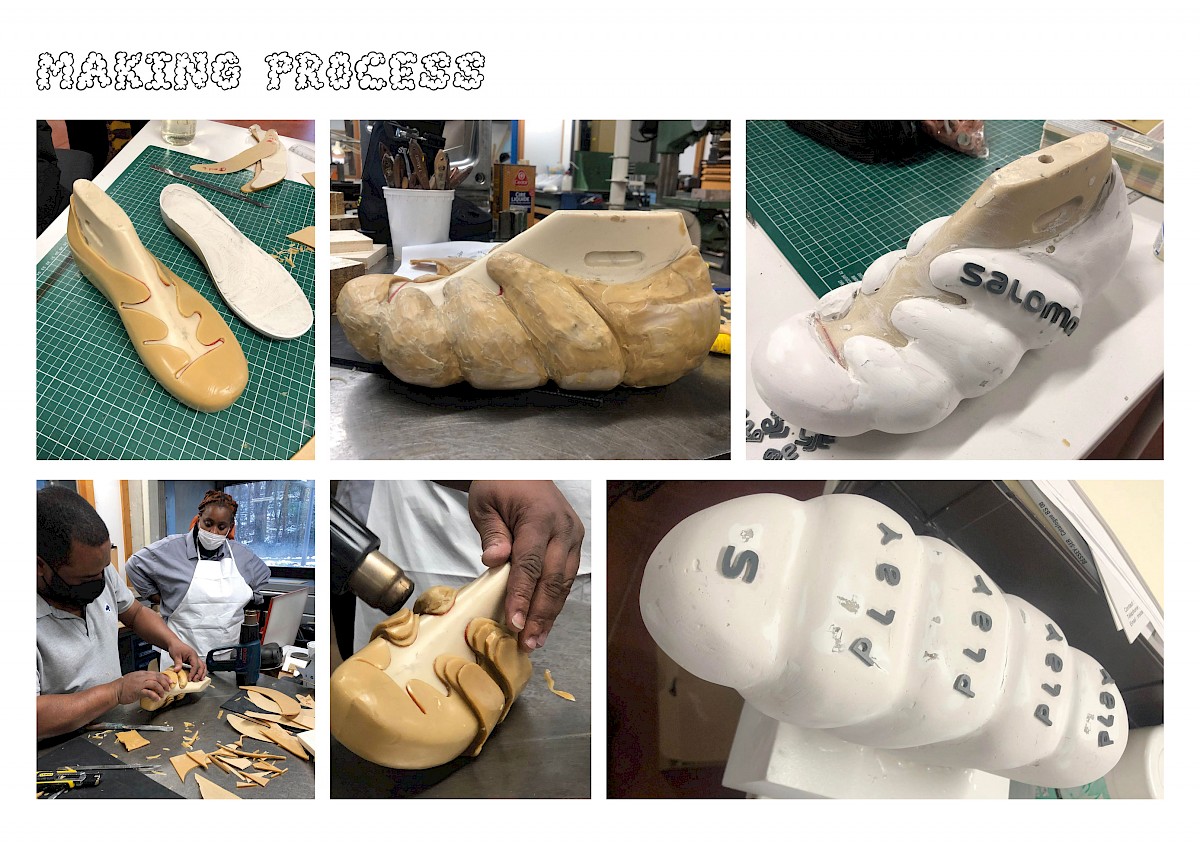
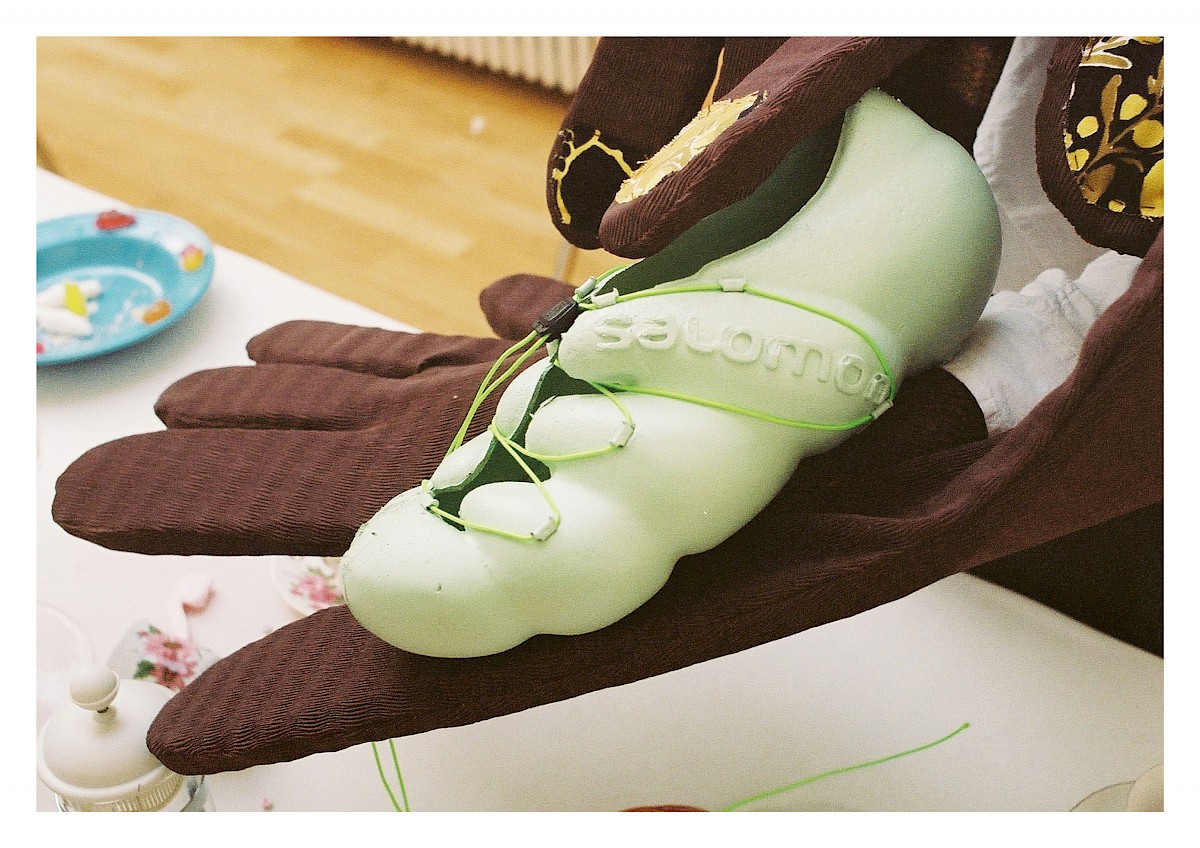
Prototypage
Prototyping
- Dans un deuxième temps, les recherches du semestre ont été réunies au sein d’une Publication, réalisé sous la supervision de la graphiste Florine Bonaventure (Gentlewoman, Londres). Déclinaison des recherches Salomon dans un contexte expérimental avec une ouverture sur le vêtement et l’accessoire et la création d’une édition; Création d’un storytelling à partir d’intentions instinctives;
- Le point de départ étant : Extrapolation sur la base du brief Salomon. De quoi 2024 sera-t-elle faite? Quels enjeux, quels projets, quelles aspirations? Vers quels modèles historiques, artistiques, scientifiques, spéculatifs, utopiques/dystopiques se tourner pour appréhender l’avenir? L’édition est le support principal du projet. La publication contient les réalisations propres à ce second projet (produits, textes, images, documentations, expérimentations) ainsi que les recherches et réalisations issues du projet Salomon . Ce second axe est à la fois un outil pédagogique de tri, d’organisation et de support des recherches et un objet de présentation à part entière du projet studio. La structure mise en place pour se projet se veut volontairement flexible et ouverte afin que la classe puisse se la réapproprier en fonction de ses ambitions et de ses besoins.
- In a second step, the research of the semester was gathered in a Publication, realized under the supervision of the graphic designer Florine Bonaventure (Gentlewoman, London). Declination of the Salomon research in an experimental context with an opening on clothing and accessories and the creation of an edition; Creation of a storytelling from instinctive intentions;
- The starting point being: Extrapolation based on the Salomon brief. What will 2024 be made of? What issues, what projects, what aspirations? Which historical, artistic, scientific, speculative, utopian/dystopian models to turn to in order to apprehend the future? The edition is the main support of the project. The publication contains the achievements of this second project (products, texts, images, documentations, experiments) as well as the research and achievements of the Salomon project. This second axis is both a pedagogical tool for sorting, organizing and supporting the research and an object of presentation in its own right of the studio project. The structure set up for this project is deliberately flexible and open so that the class can reappropriate it according to its ambitions and needs.
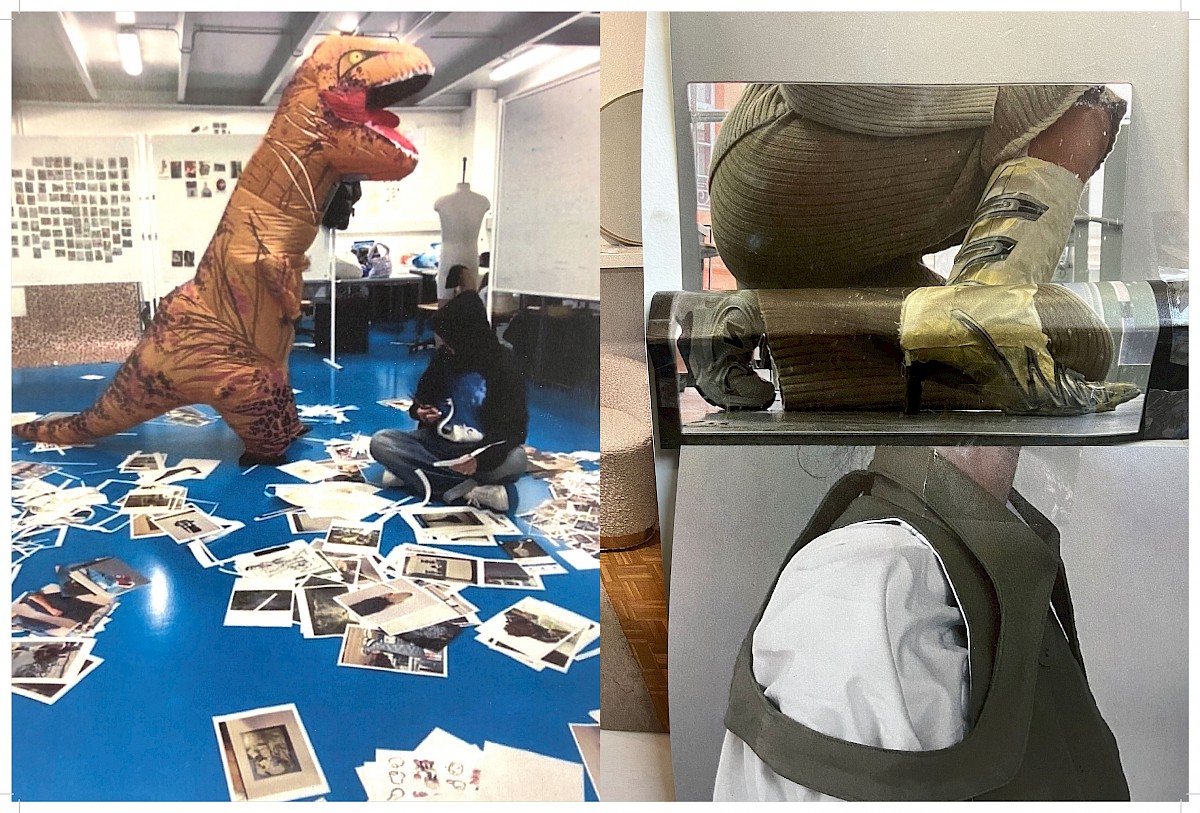
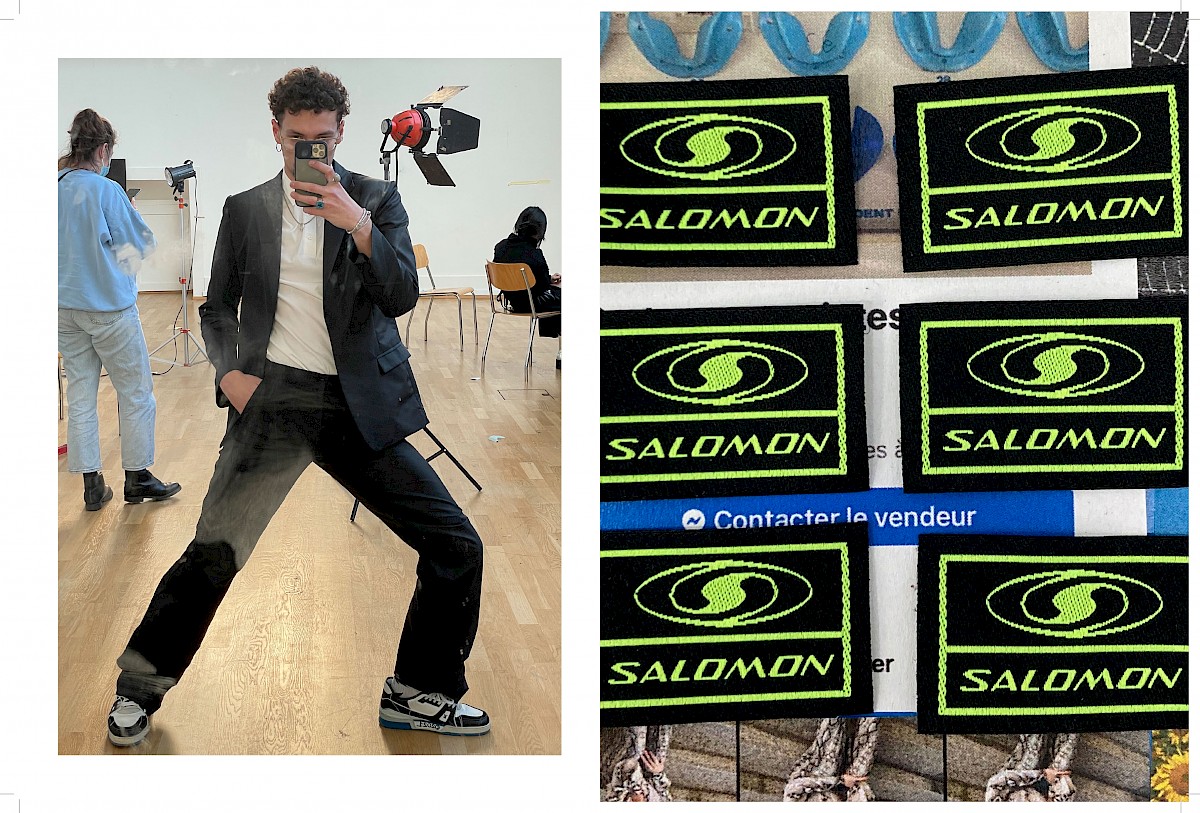
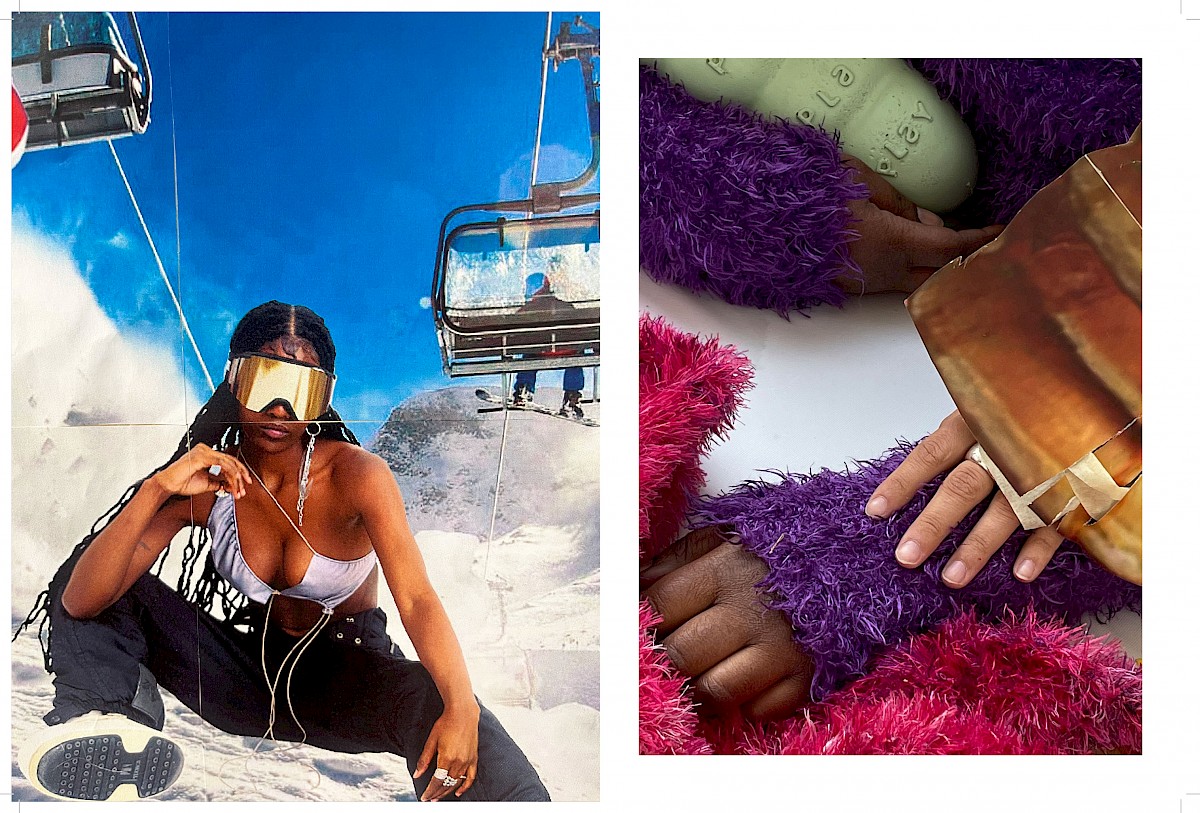
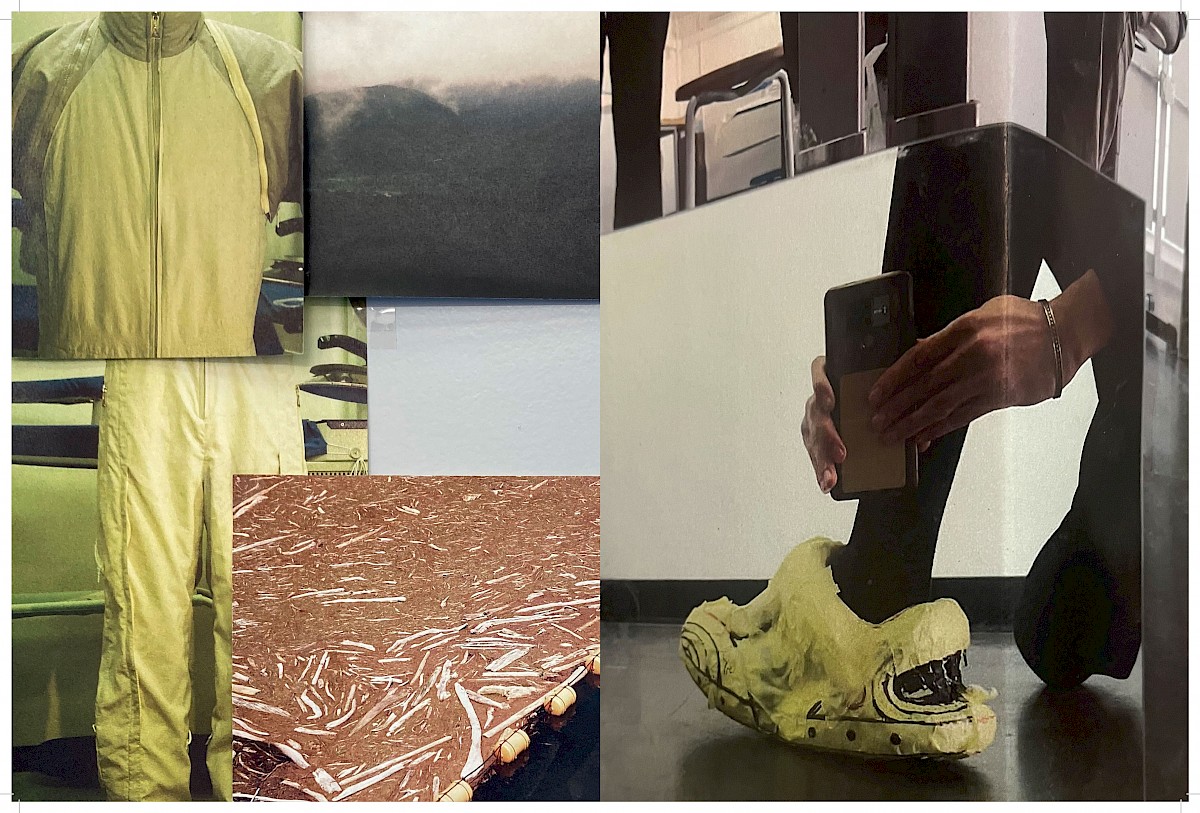
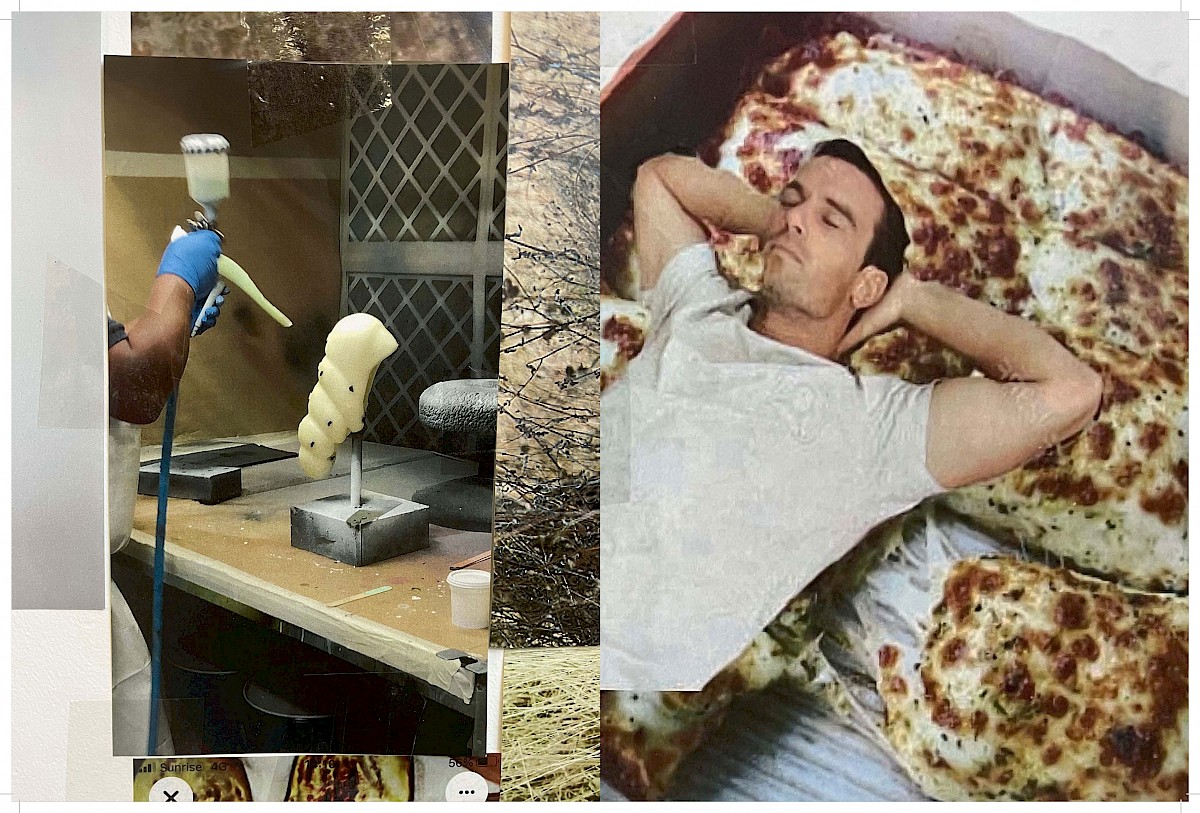
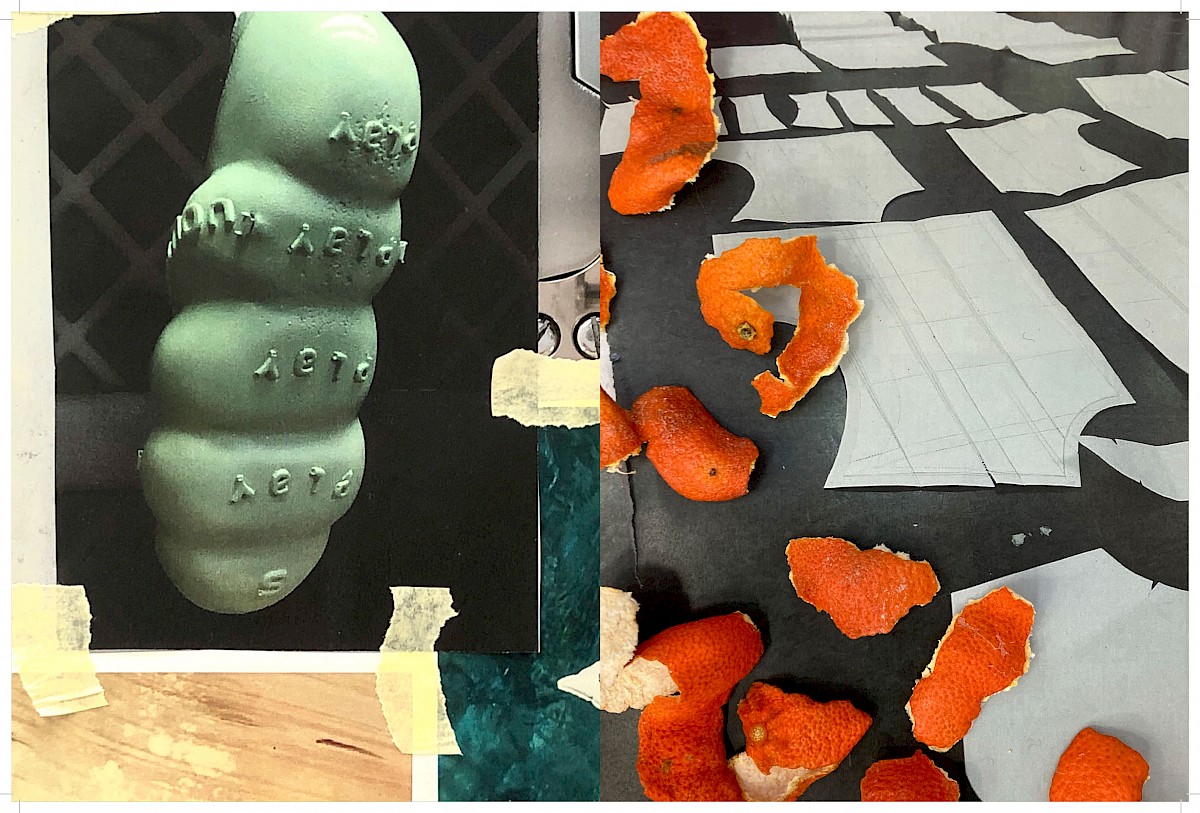
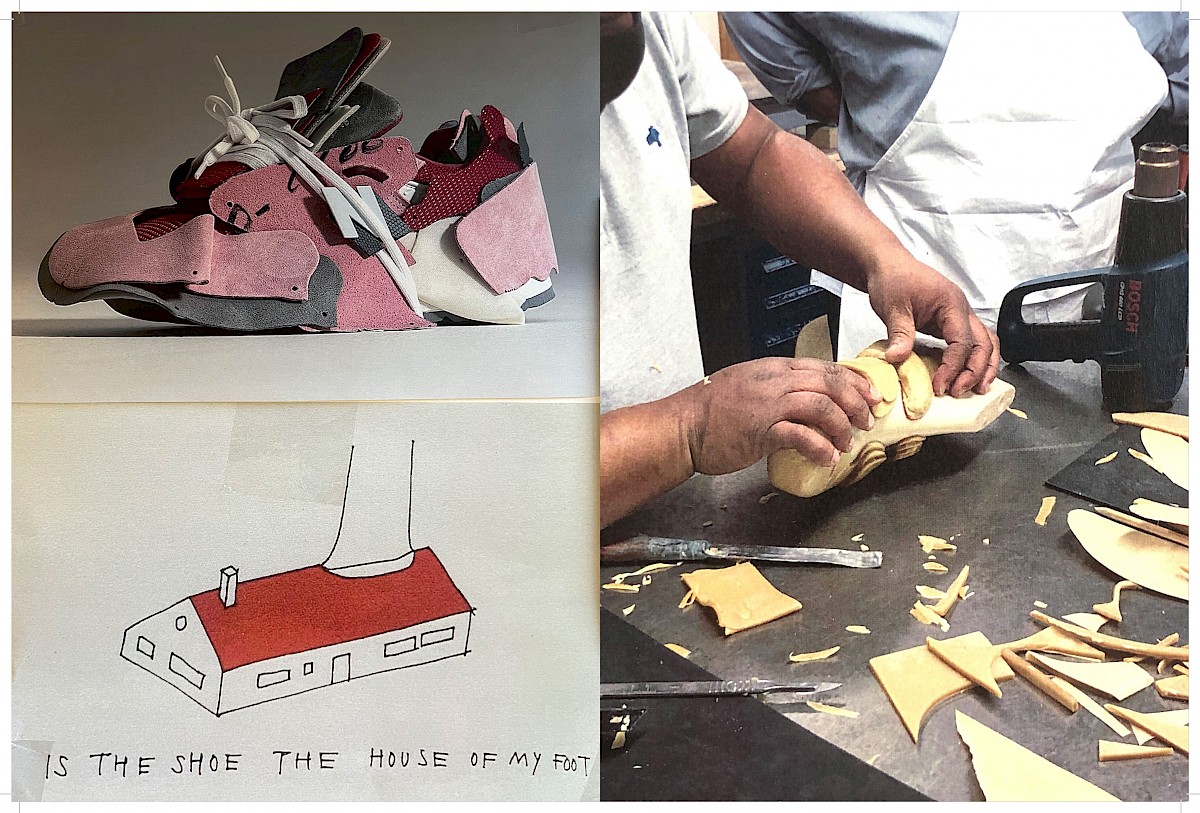
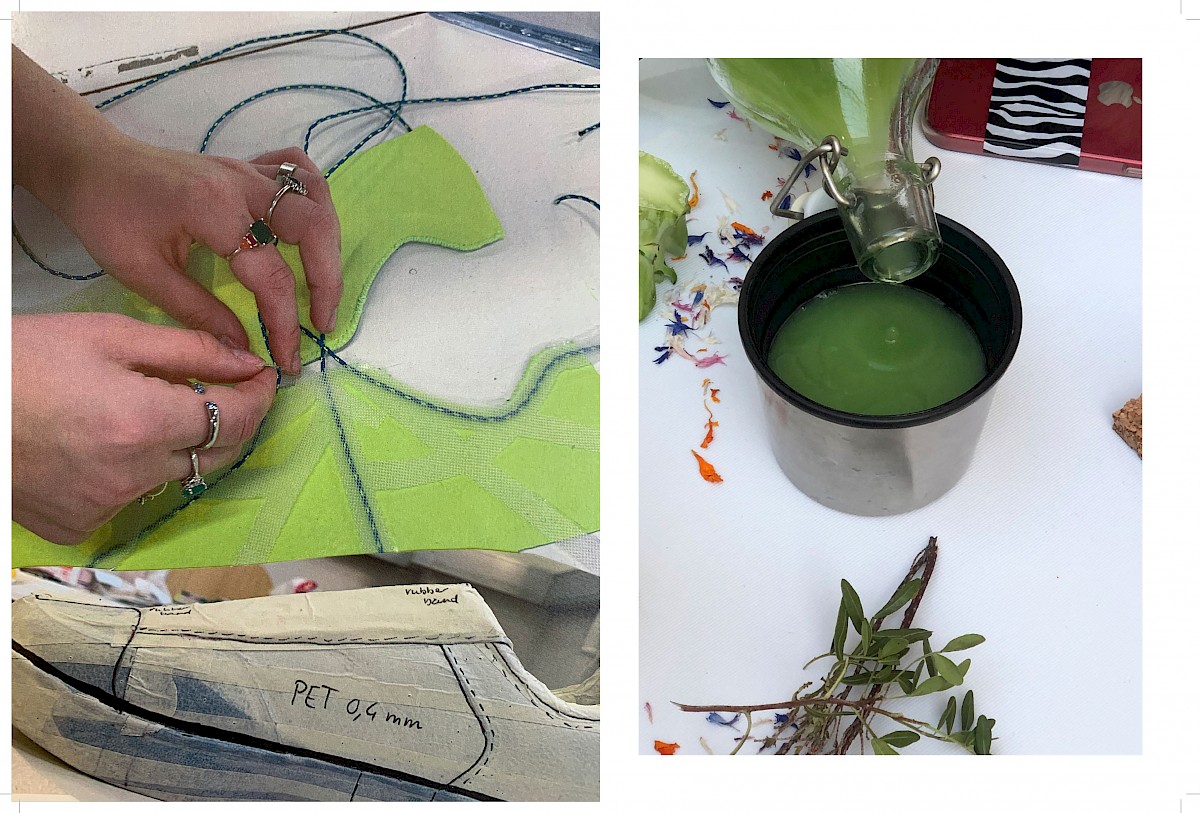
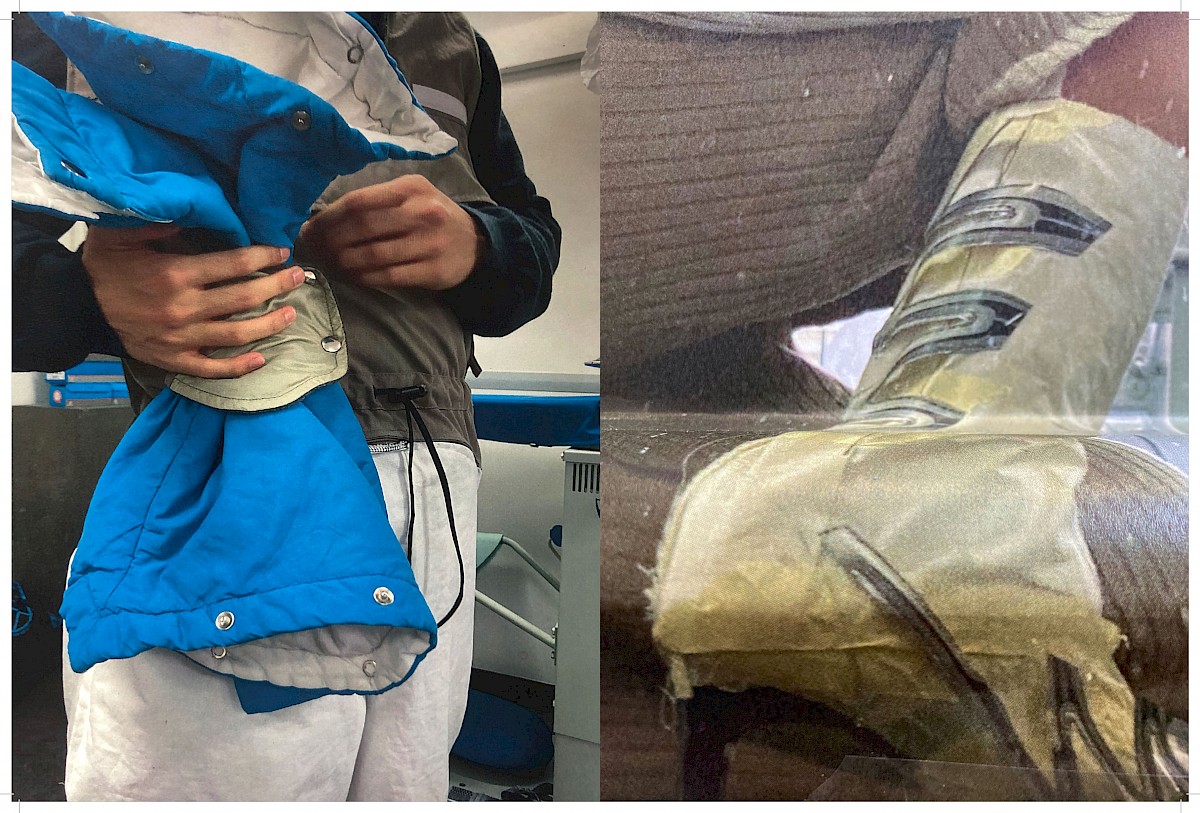
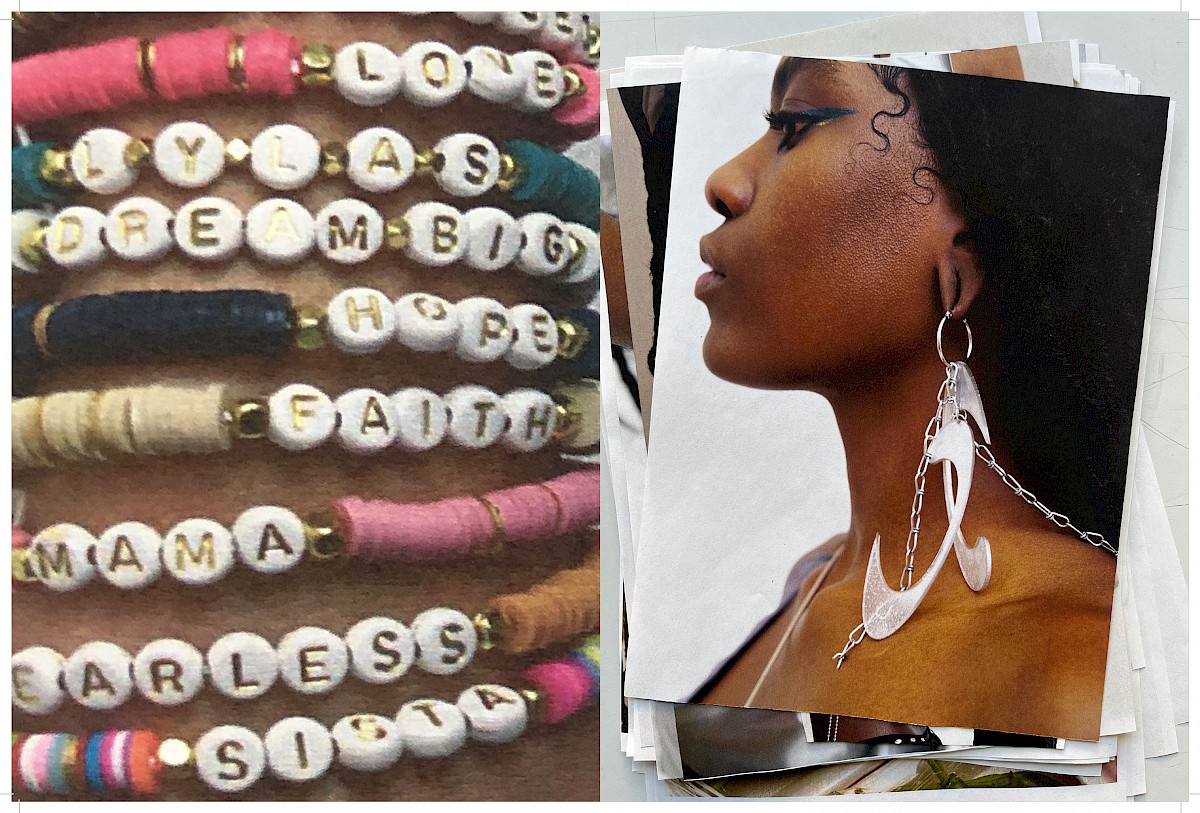
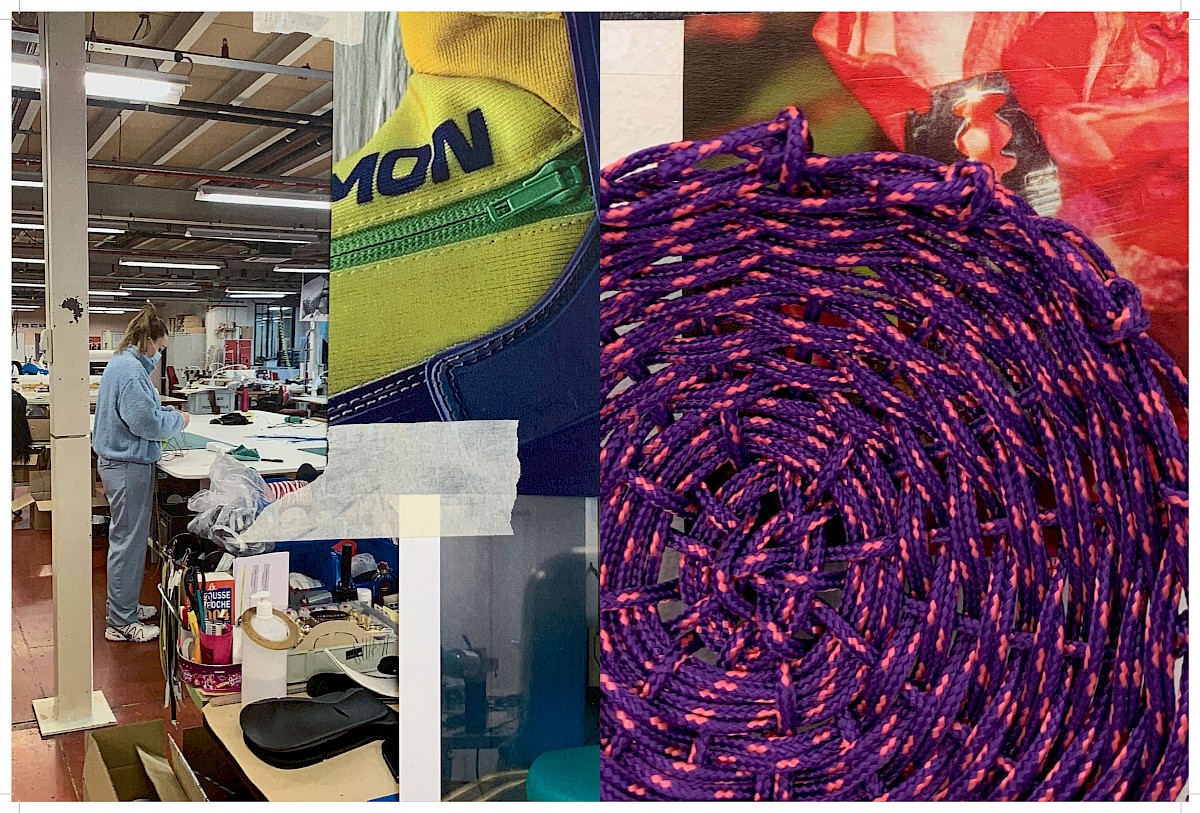
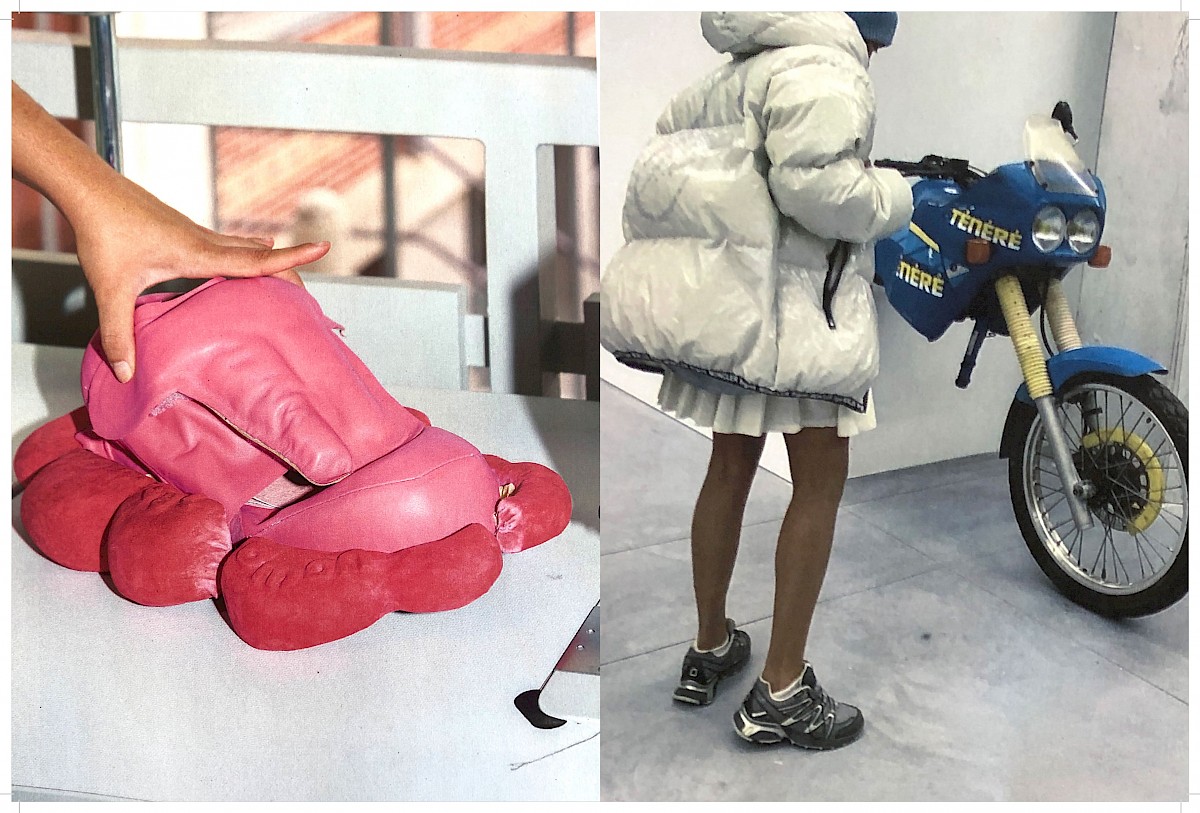
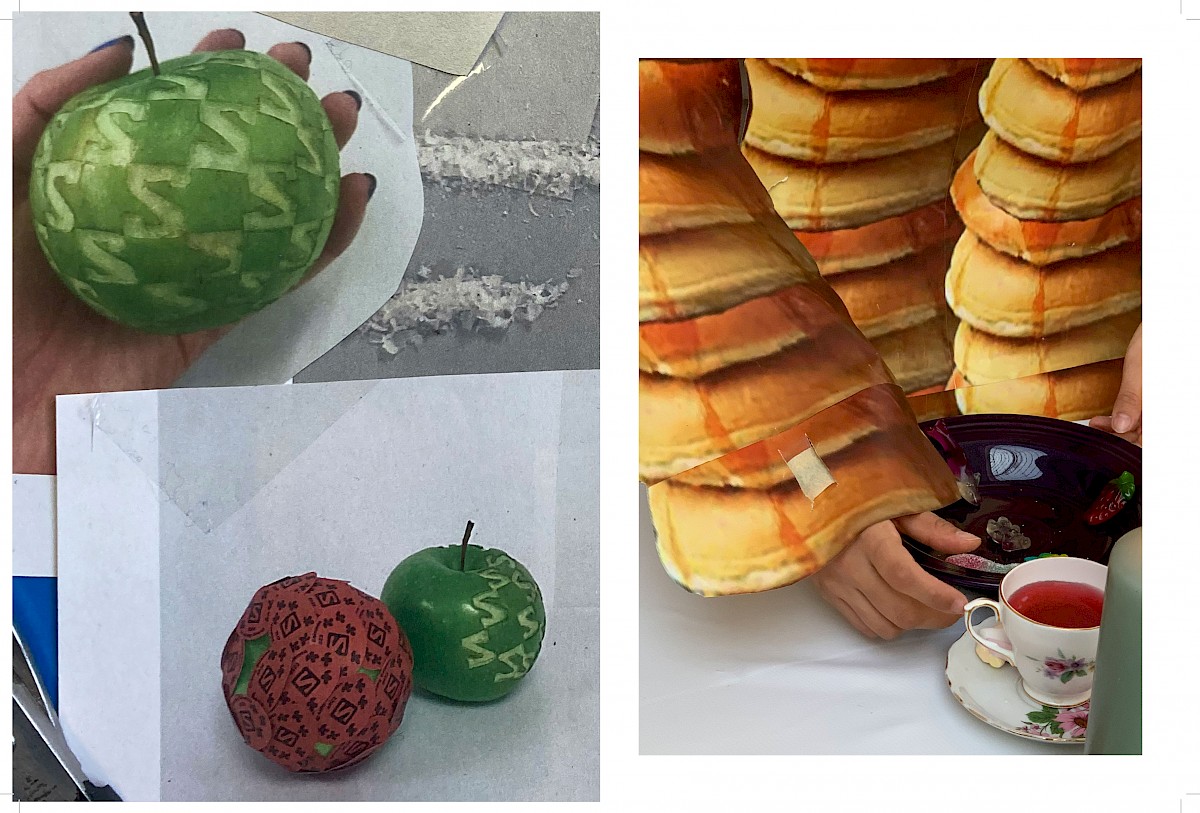
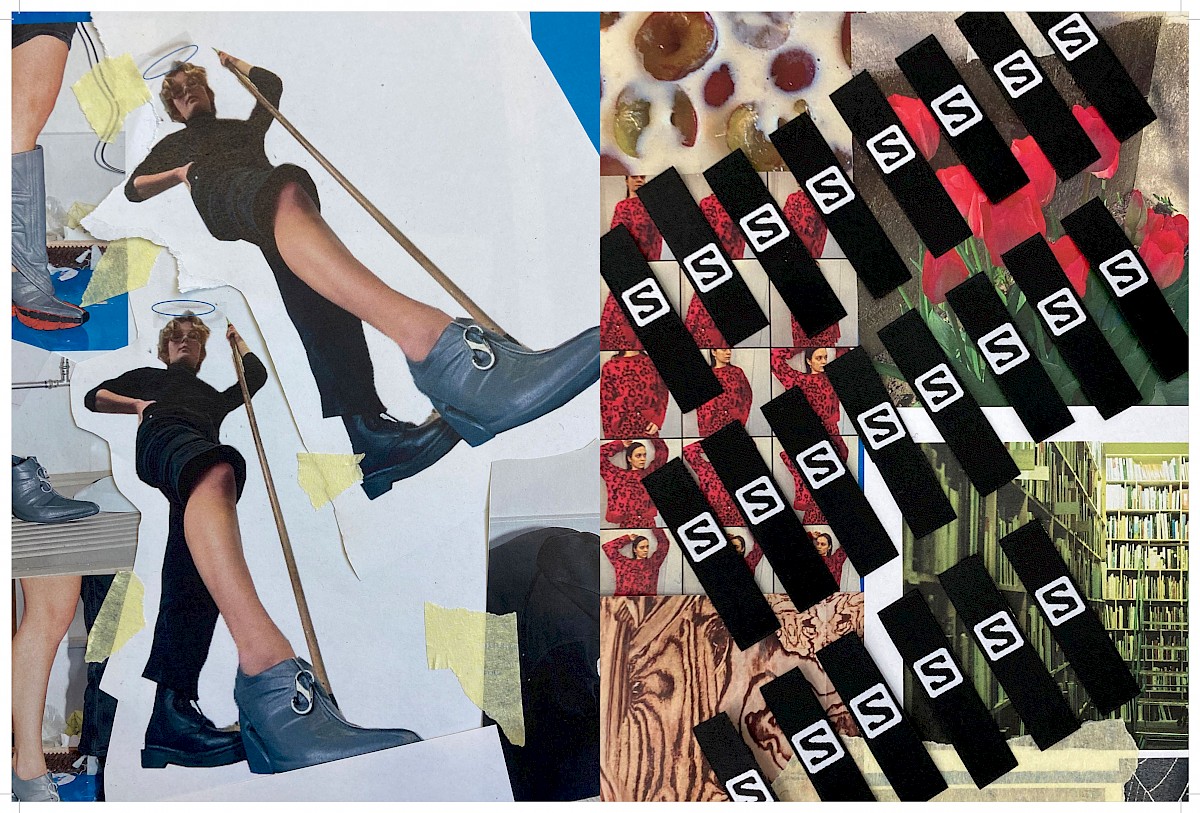
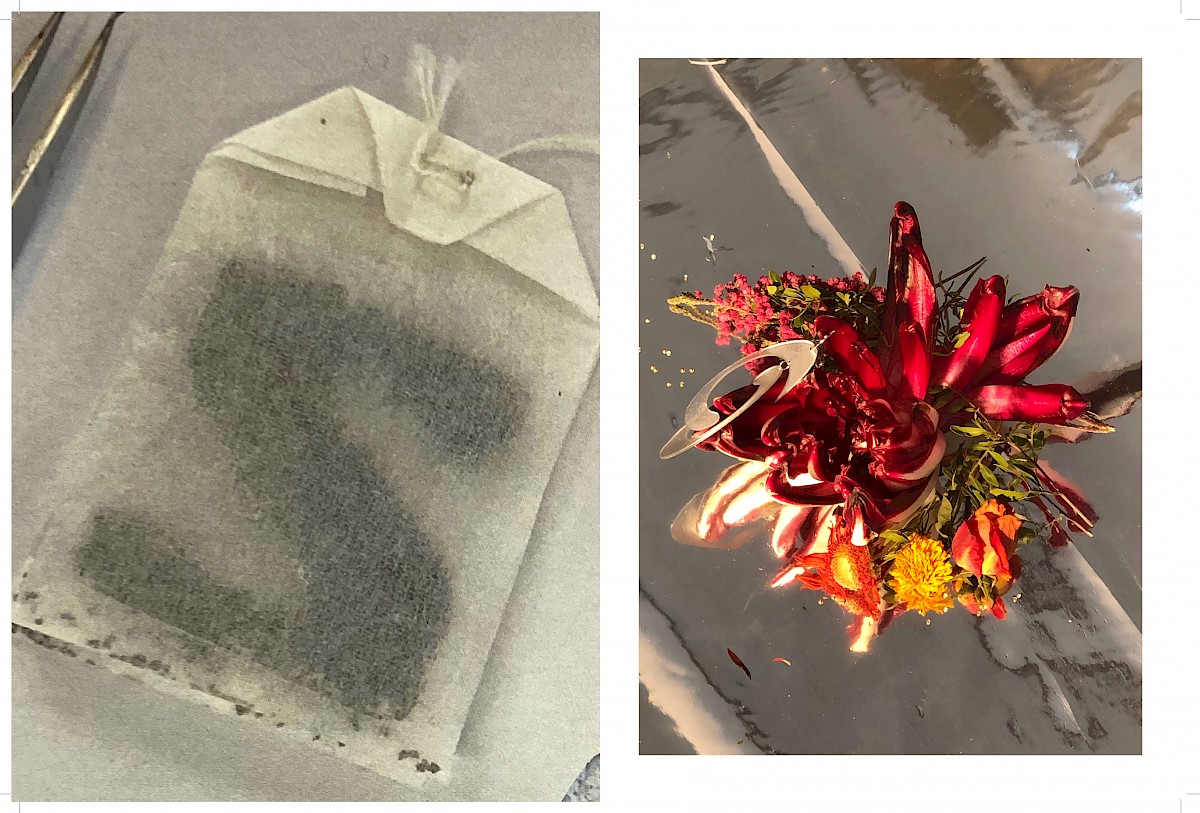
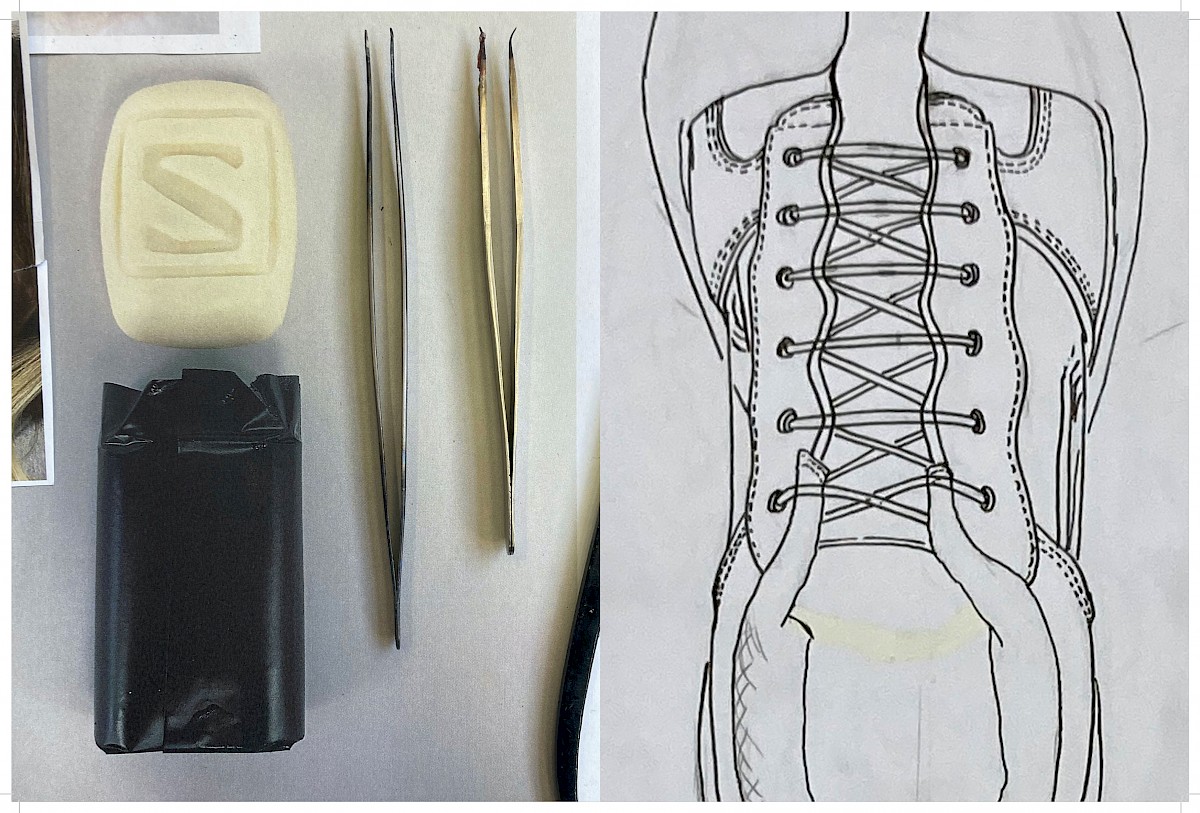
Publication Salomon avec Florine Bonaventure
Publication Salomon with Florine Bonaventure
Semestre 2
Au cours du second semestre, les étudiants du master travaillent sur leur collection personnelle (vêtements / accessoires / bijoux), explorent leur propre pratique par l’expérimentation et posent les bases conceptuelles et de design de la collection du diplôme MA2.
Grâce au tutorat individuel, aux discussions de groupe, aux ateliers, aux voyages de recherche et aux conversations avec différents professionnels tels que des designers, des techniciens, des artistes, des experts en durabilité, des directeurs artistiques, des stylistes, etc., les étudiants acquièrent de l’autonomie et de la confiance dans leur propre pratique en s’appuyant sur la structure offerte par l’école ; ils construisent un univers créatif conscient et cohérent en explorant et en définissant les aspects clés suivants :
- ADN : les étudiants commencent le semestre en analysant et en discutant leurs travaux antérieurs, en définissant leur identité de designer à travers des valeurs et un vocabulaire visuel.
- Méthodologie : les étudiants analysent et développent des outils spécifiques à leur pratique, en considérant des aspects tels que le moulage et la durabilité.
- Produit : les produits créés cette année s’inscrivent dans deux contextes différents :
- La collection personnelle : le développement de minimum 4 silhouettes qui traduisent leurs idées et leur univers en produits en pensant à une collection dans sa globalité et sa diversité (produits avec différentes fonctions).
- Une pièce en collaboration avec Hermès Women studio Ready-to-wear : cette année les étudiants ont développé une pièce durable, suivant un brief donné par Hermès. L’objectif était de comprendre ce que signifie l’ADN d’une marque et comment ils peuvent penser à leur propre identité de conception dans le contexte d’une marque différente. La collaboration avec Hermès a débouché sur plusieurs stages, la présentation de projets à plusieurs des métiers d’Hermès et la production d’un projet d’étudiant par l’atelier Hermès. La pièce a été incluse dans le défilé Hermès de la semaine de la mode de Paris W/F23.
- Contextualisation : les étudiants apprennent à négocier les contraintes de différents contextes et à exploiter le potentiel de chacun d’eux (rendu 2D, performance en direct et showroom).
Semester 2
During the second semester, the master students work on their personal collection (clothes / accessories / jewelry), explore their own practice through experimentation, and lay the conceptual and design foundations of the MA2 diploma collection.
Through individual tutoring, group discussions, workshops, research trips and conversations with different professionals such as designers, technicians, performers, sustainability experts, art directors, stylists, etc., the students acquire autonomy and confidence in their own practice drawing on the structure offered by the school; they build a conscious and coherent creative universe by exploring and defining the following key aspects:
- DNA: the students begin the semester by analysing and discussing their previous work, defining their identity as designer through values and a visual vocabulary
- Methodology: the students analyze and develop tools specific to their practice, by considering aspects such as casting and sustainability.
- Product: there were two different contexts for the products created this year:
- The Personal collection: the development of minimum 4 silhouettes that translate their ideas and universe into products by thinking about a collection in its globality and diversity (products with different functions).
- A piece in collaboration with Hermès Women studio Ready-to-wear: this year the students developed one sustainable piece, following a brief given by Hermès. The goal was to understand what a brand DNA means and how they can think of their own design identity in the context of a different brand. The collaboration with Hermès resulted in several internships, the presentation of projects to several of the Hermès’ métier and the production of a student’s project by the Hermès atelier. The piece was included in the Hermès fashion show at Paris Fashion Week W/F23.
- Contextualisation: the students learn to negotiate the constraints of different contexts and exploit the potential of each (2D rendering, live performance and showroom).
étudiant·e·x·s
students
Robyn Baumgartner
Somaya Belkaied
Julie Chauland
Yabun Chen
Alan Clerc
Camille Combremont
Jeremy Currat
Fatma Elshabbi
Tracy Charlène Lomponda
Kenshiro Suzuki
Maëlle Walcher
professeur·e·x·s et intervenant·e·x·s
tutors and guests
Joy Ahoulou
Arpent Studio
Florine Bonaventure
Camille Buhler
Sabrina Calvo
Marina Chedel
Aude Fellay
Soraya Lutangu
Emilie Meldem
Noémie Michel
Aya Noel
Christine Rösch
Valentina Persico
Victor Prieux
Dinie Van den Heuvel
Tineke Van der Meer
Peter Wiesmann
assistant.e.x.s
Rafaela Gerhard
Cyril de Froment
Madeline Ribeiro

